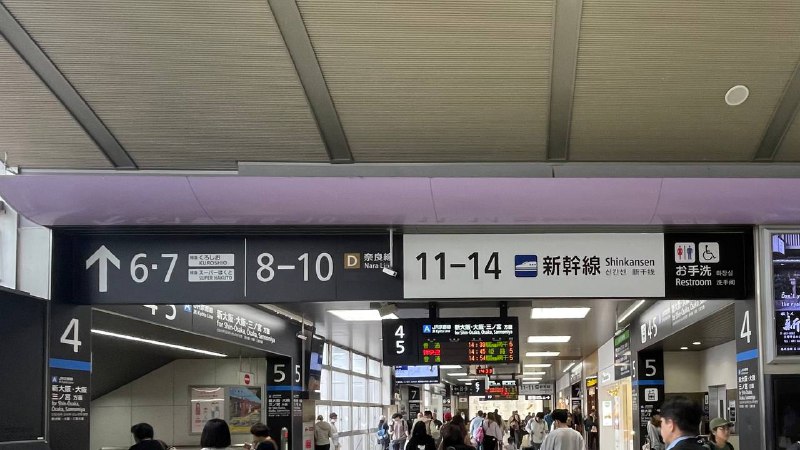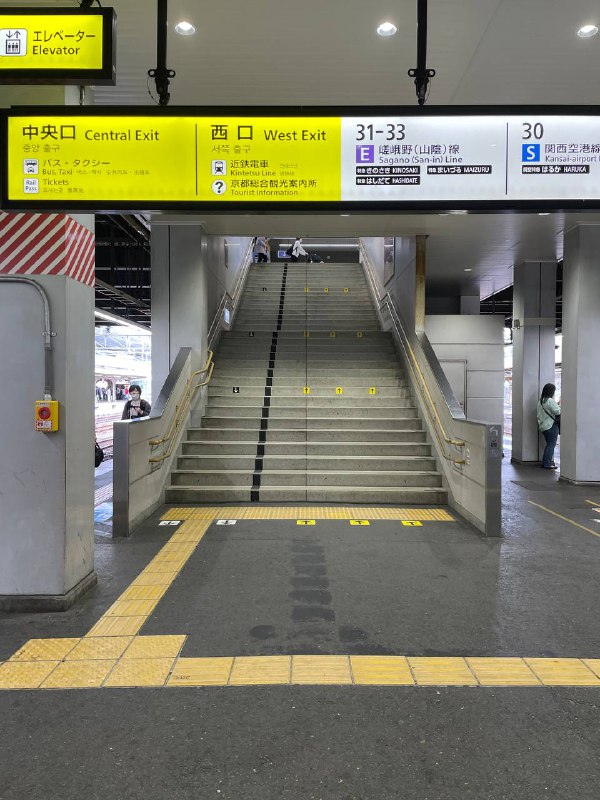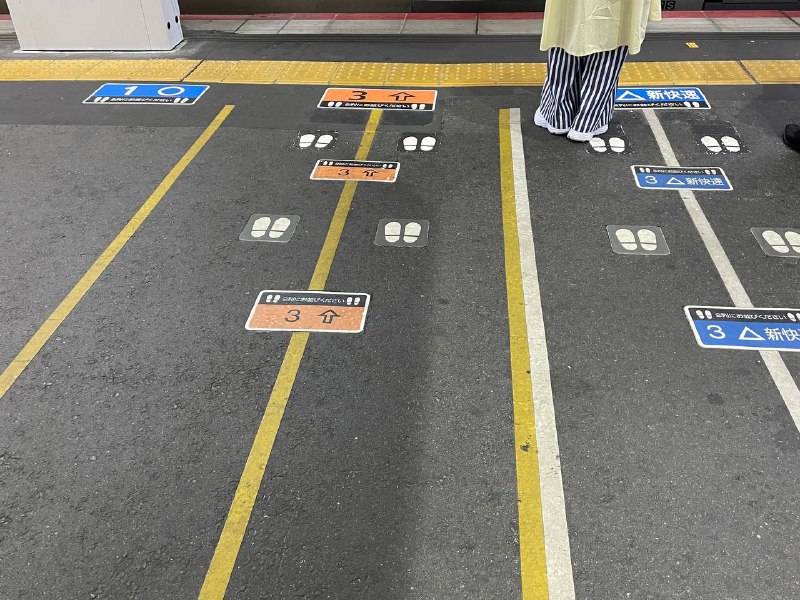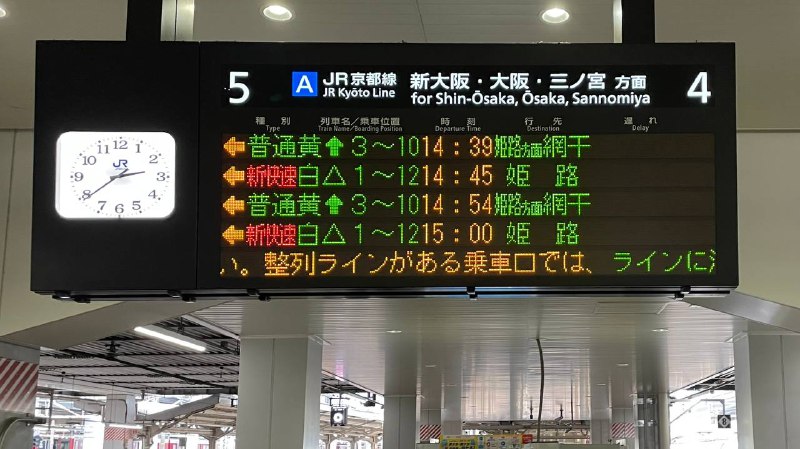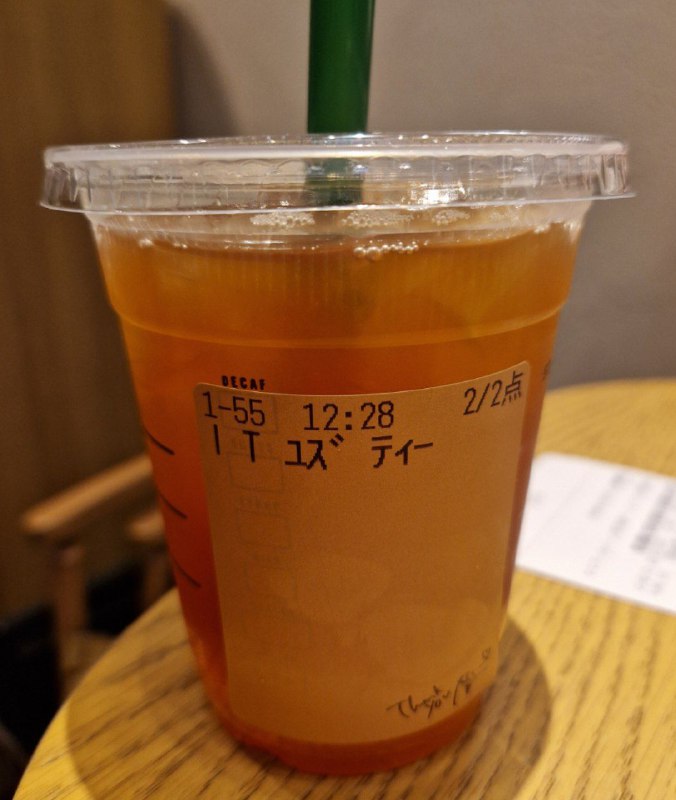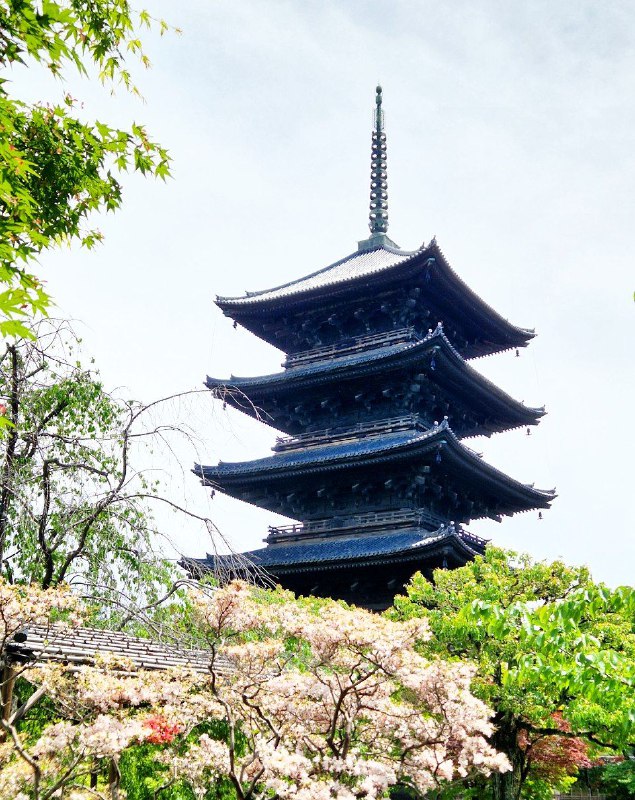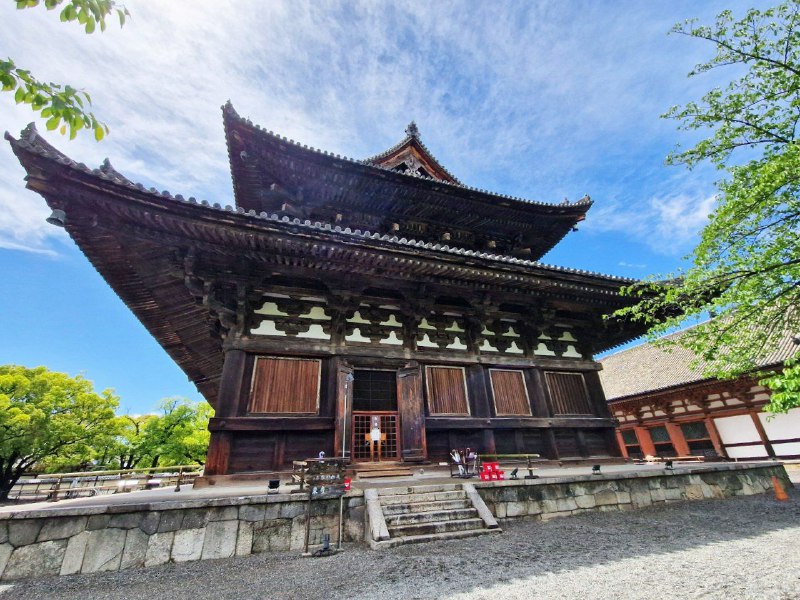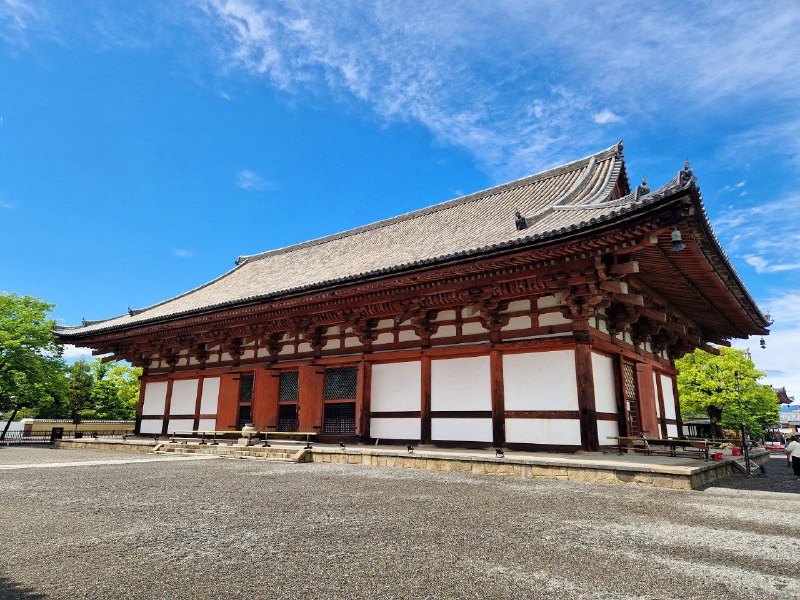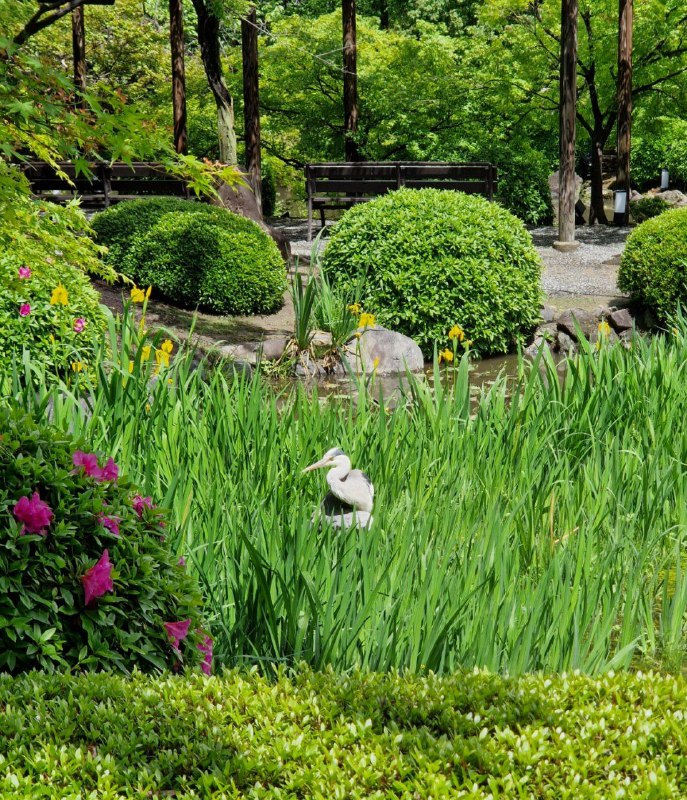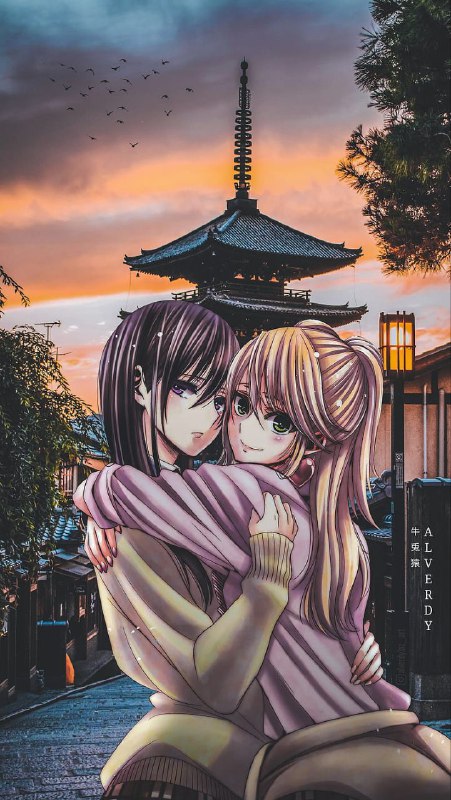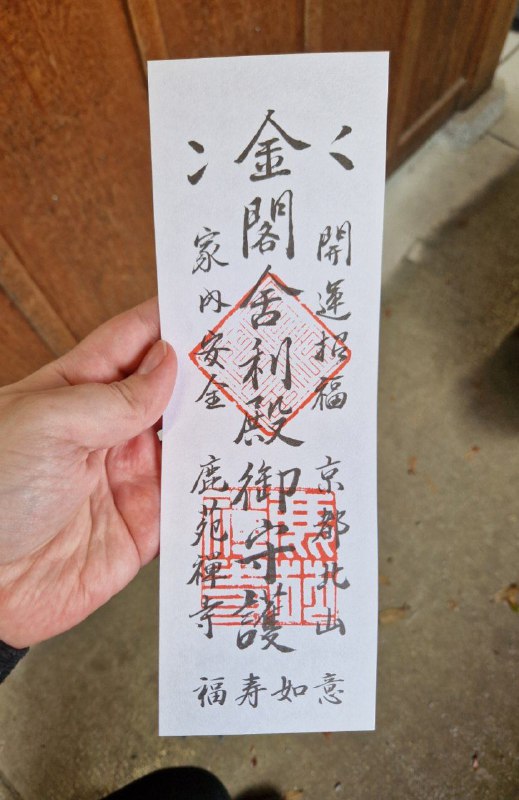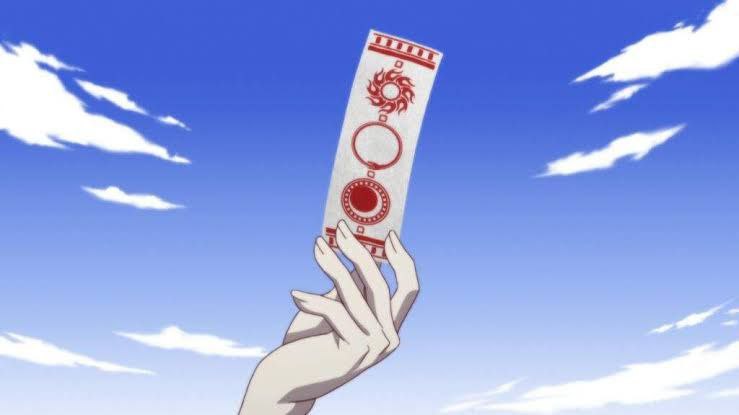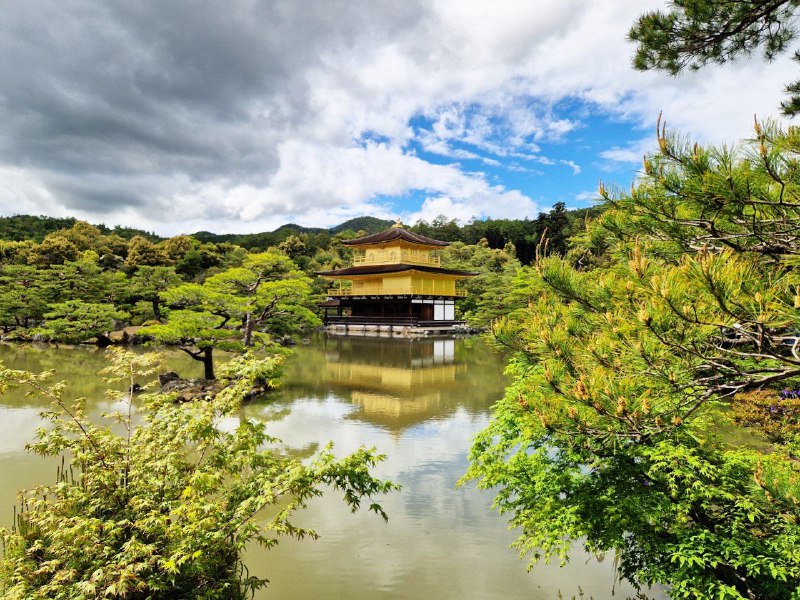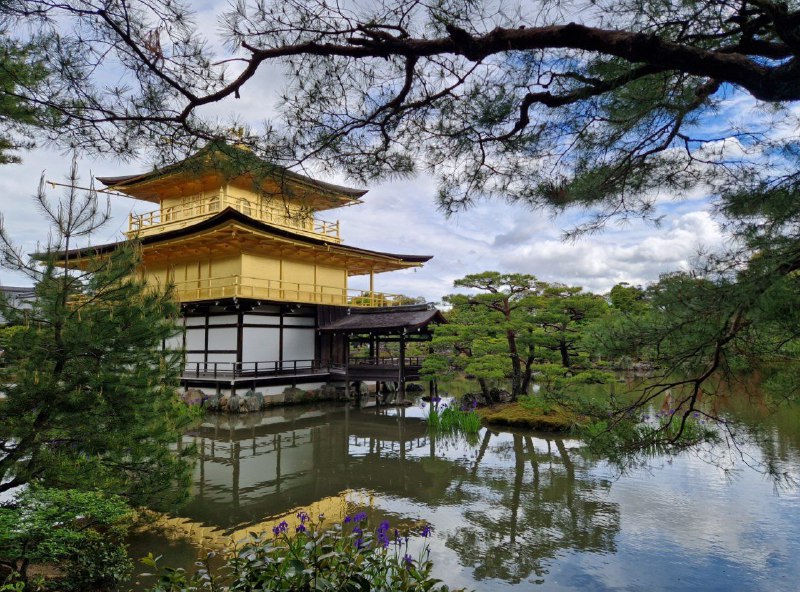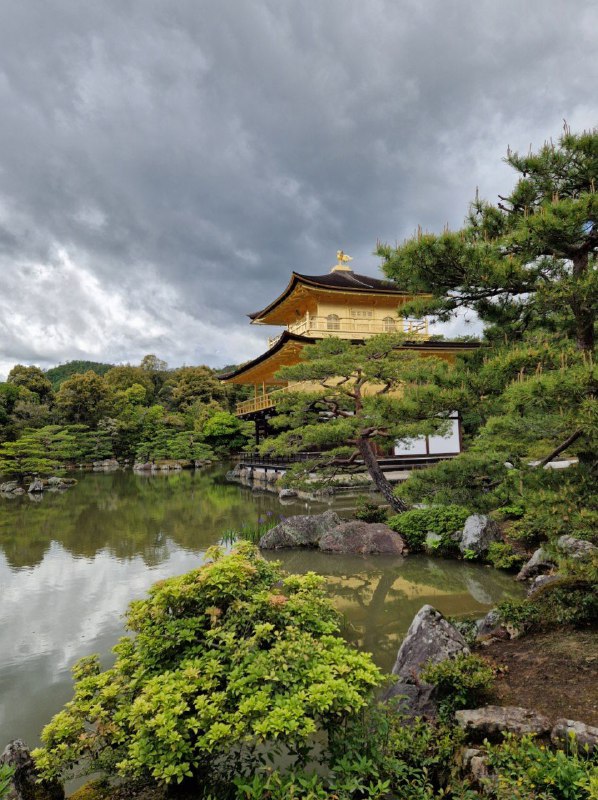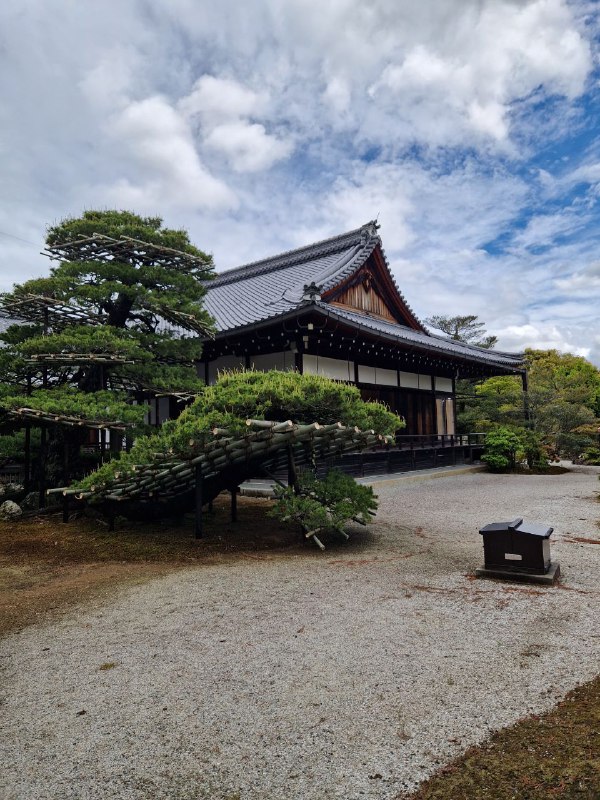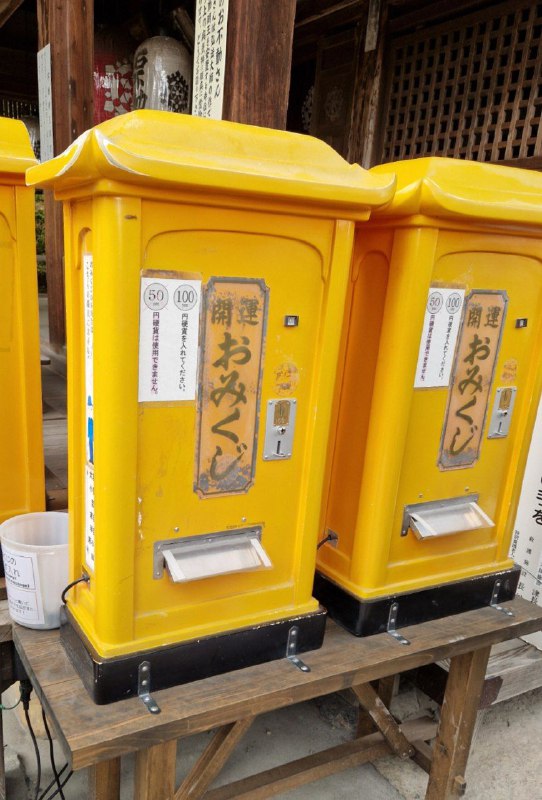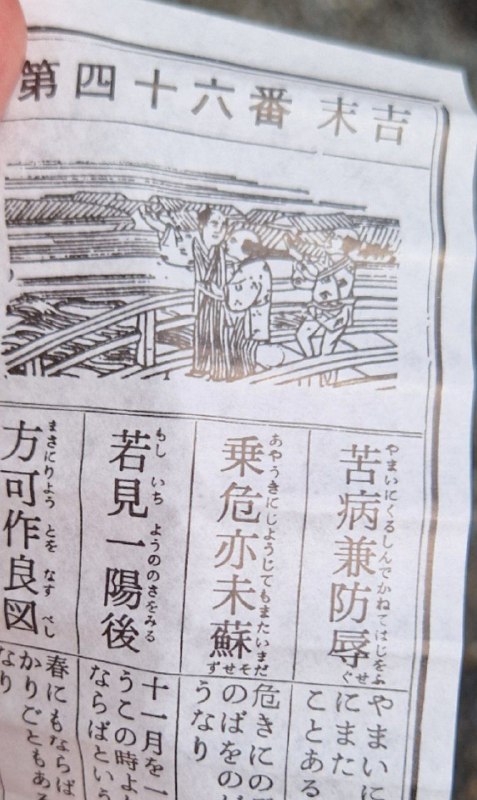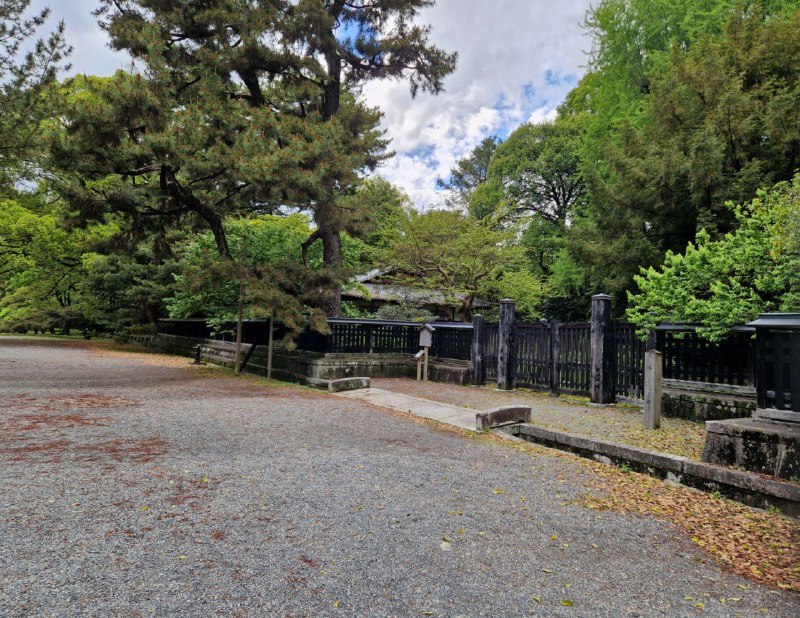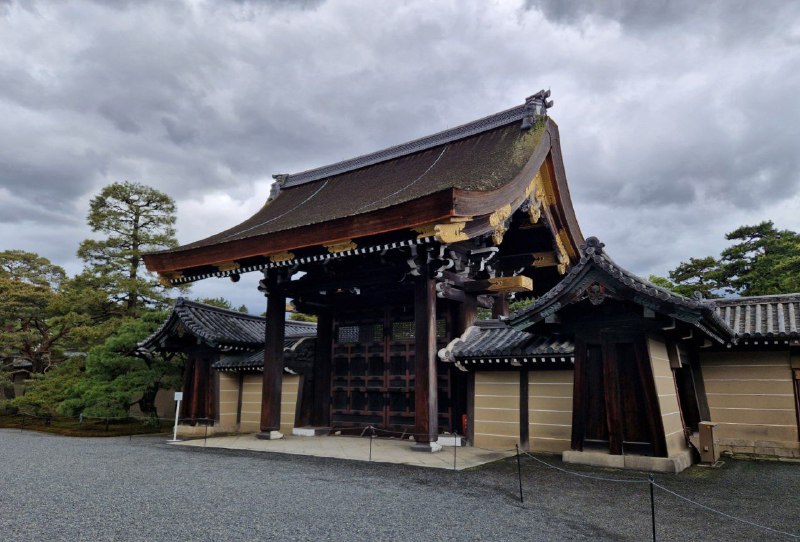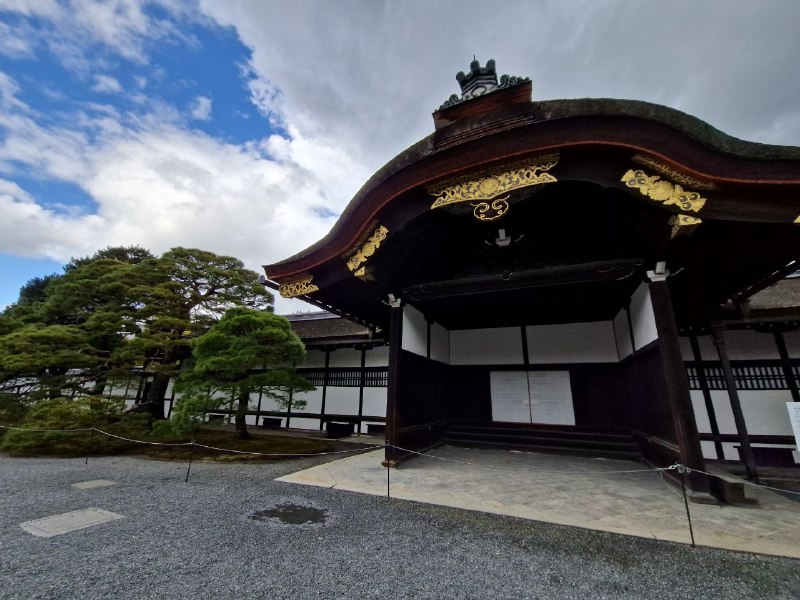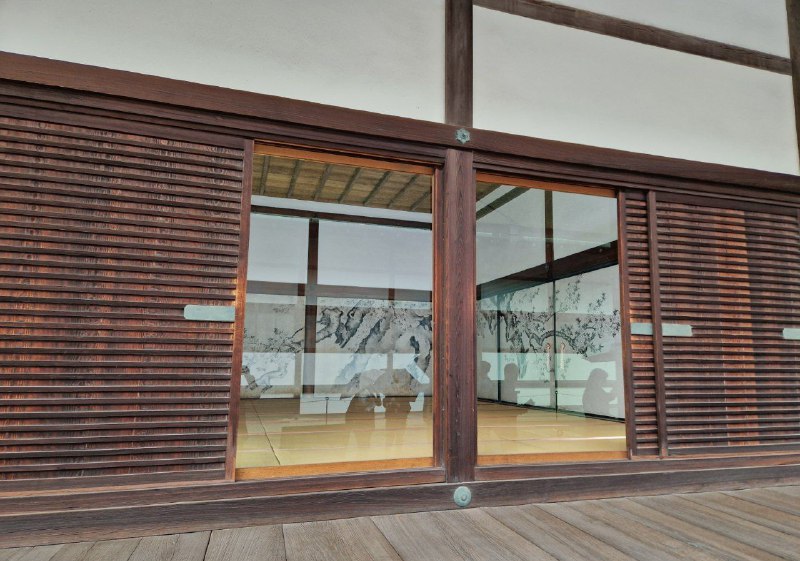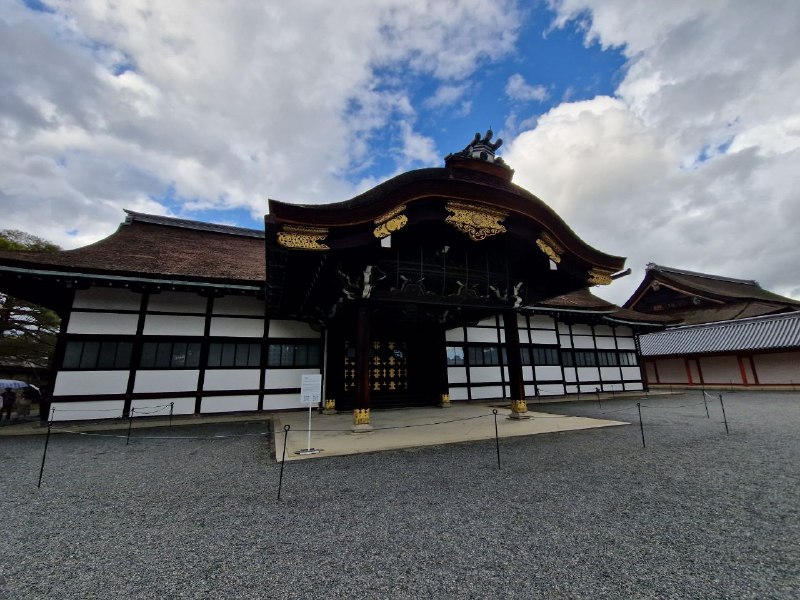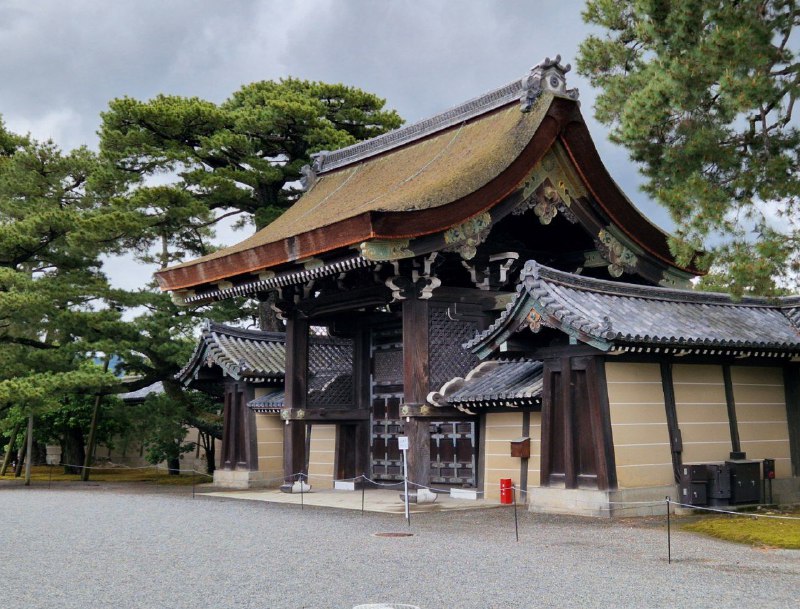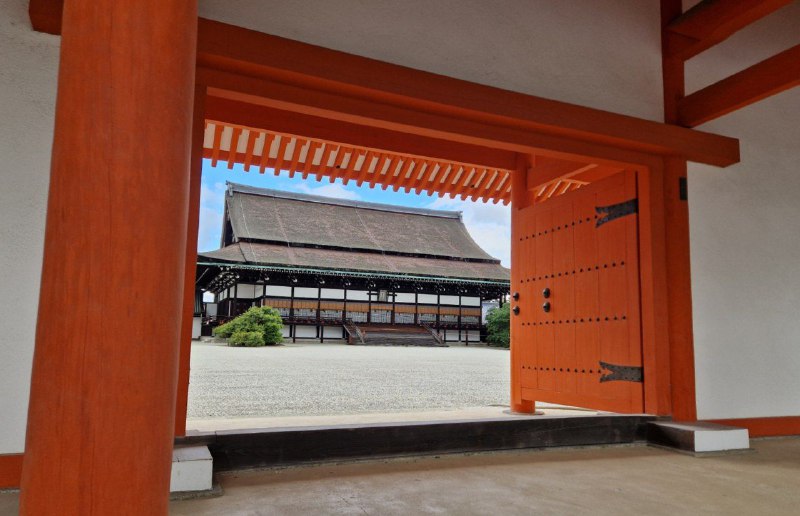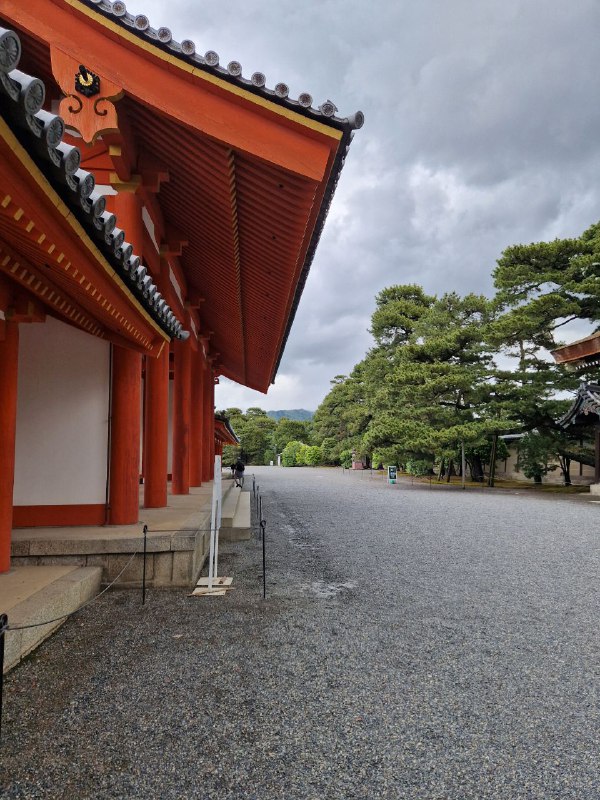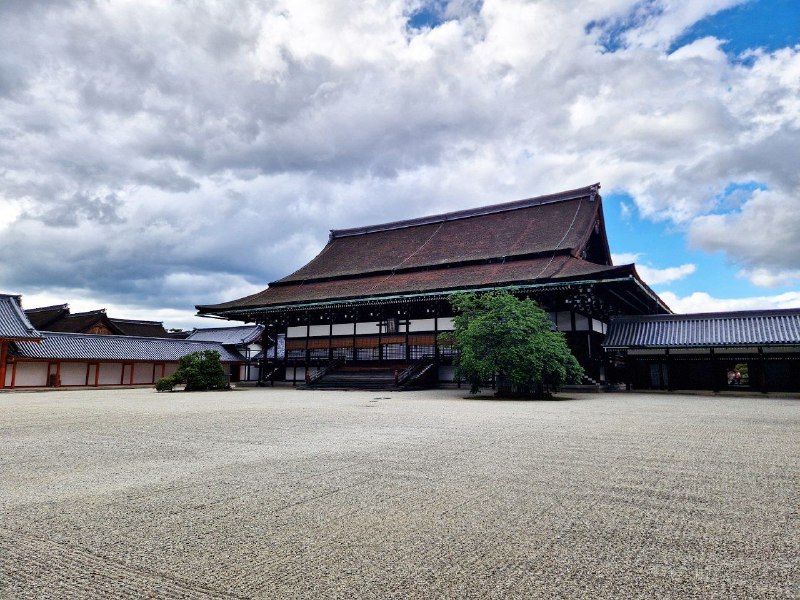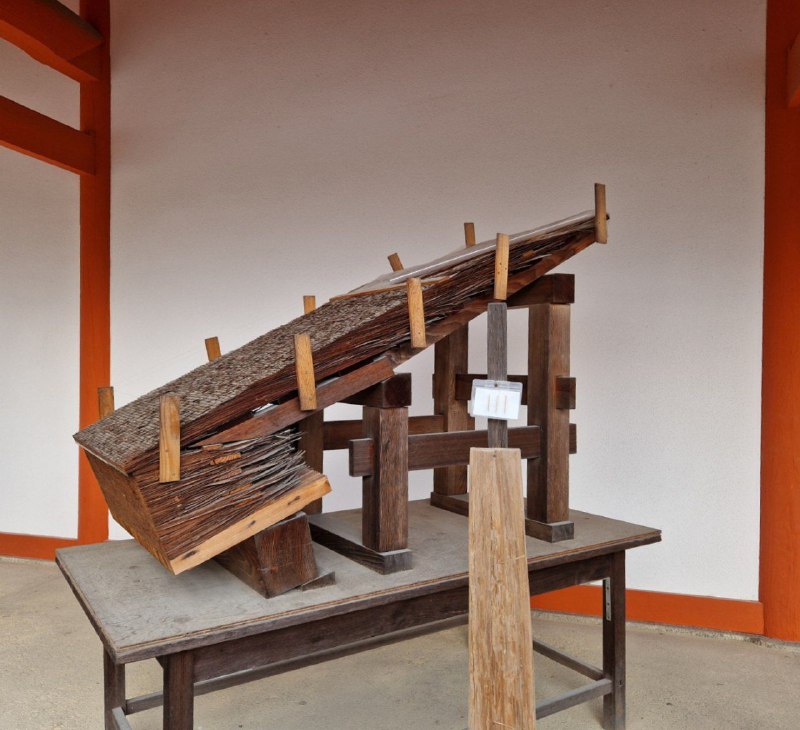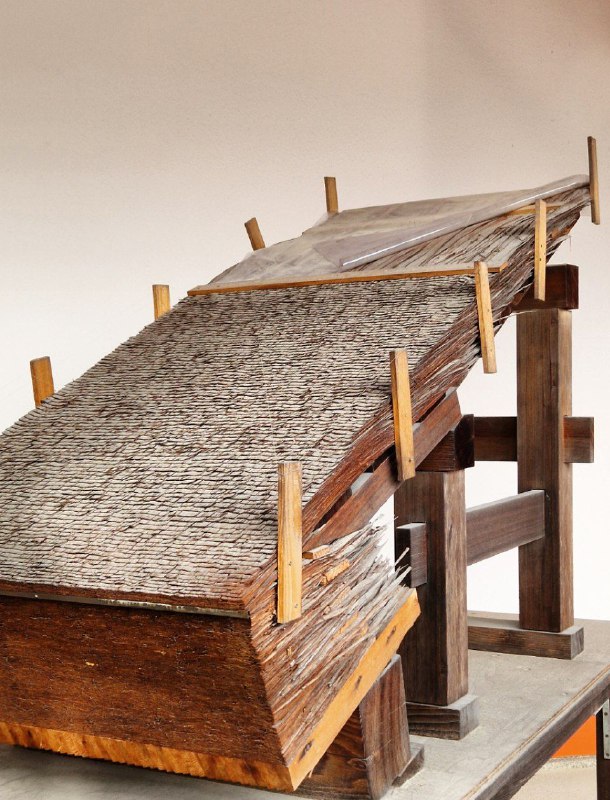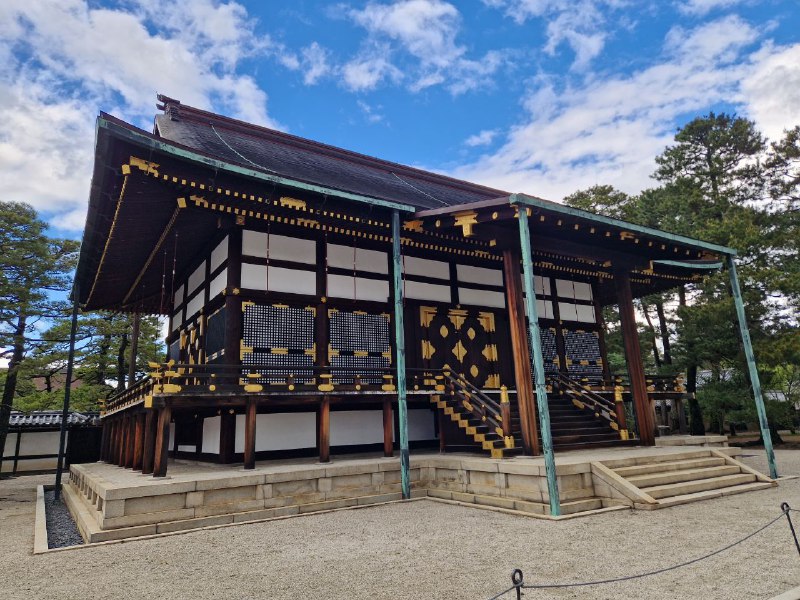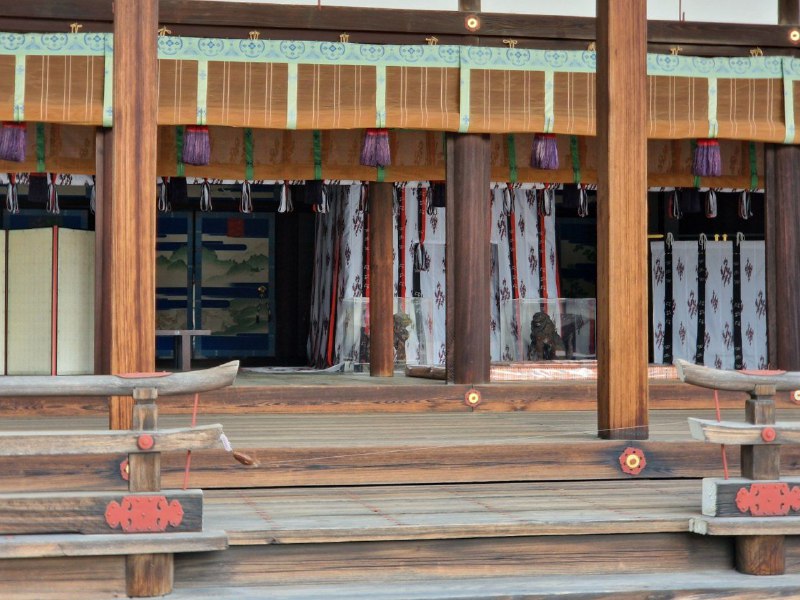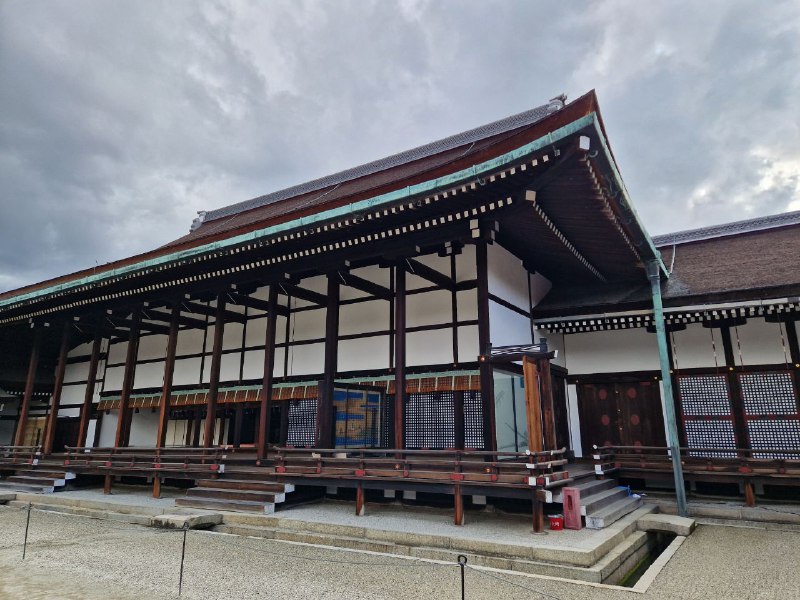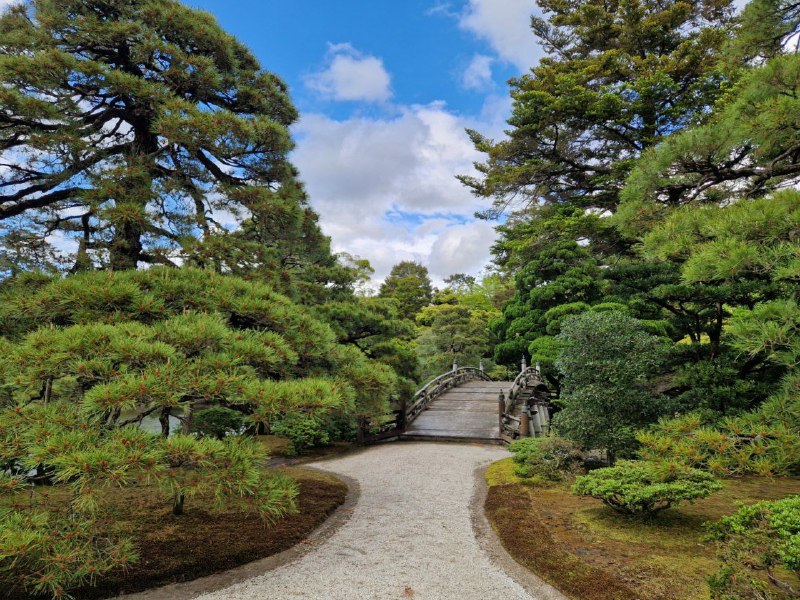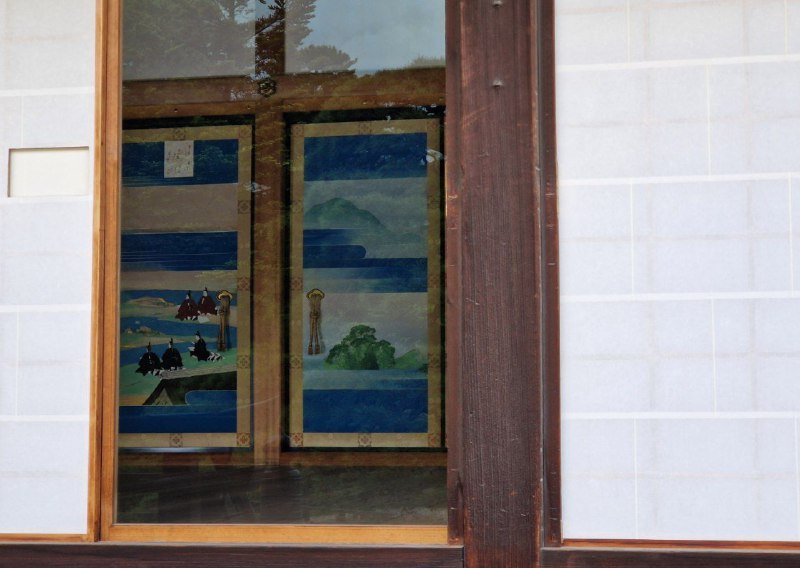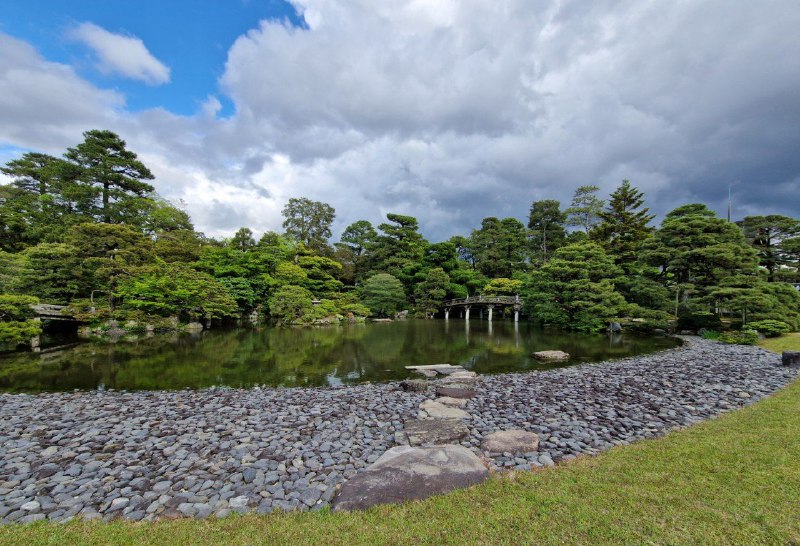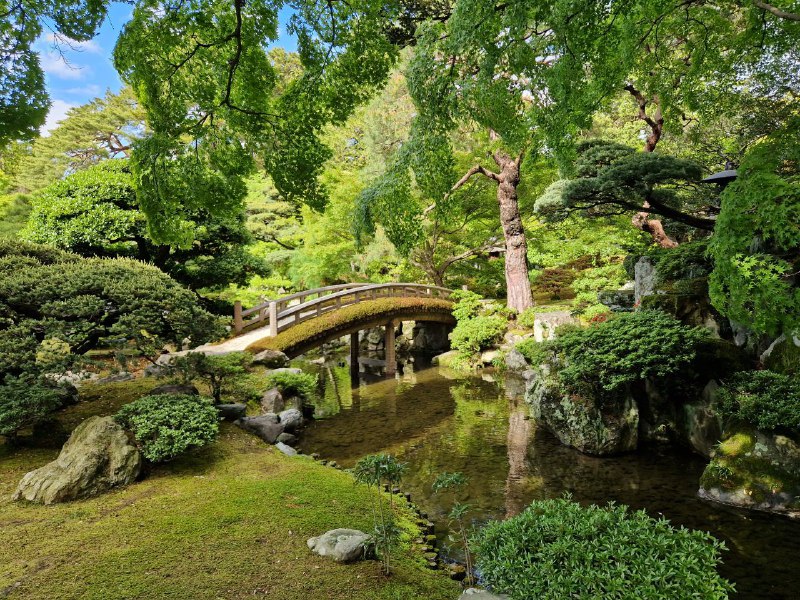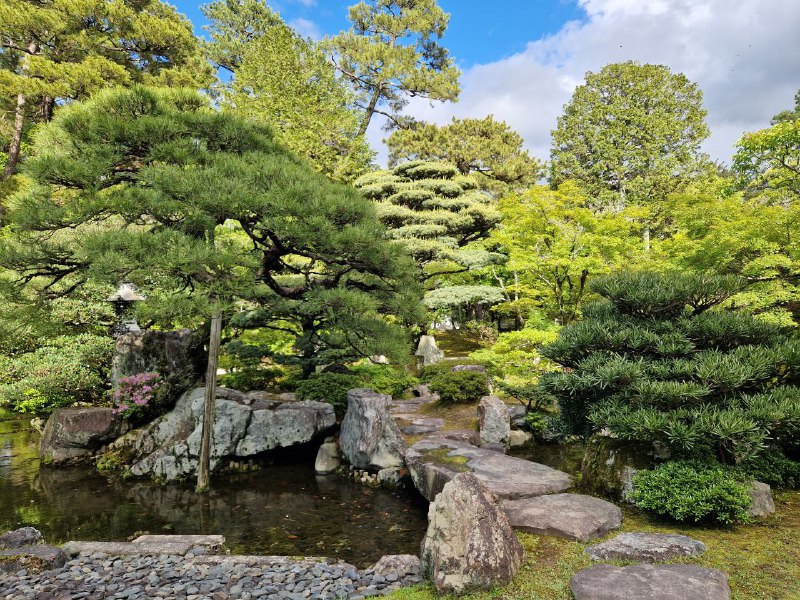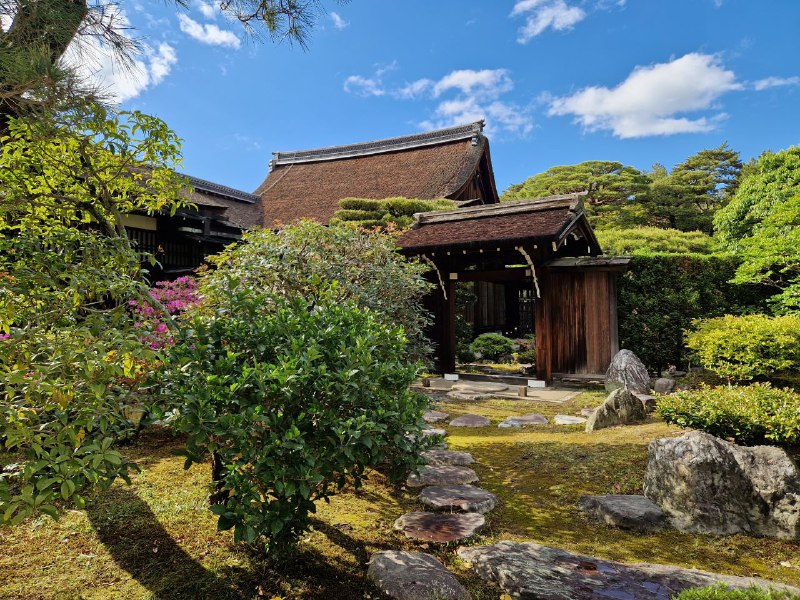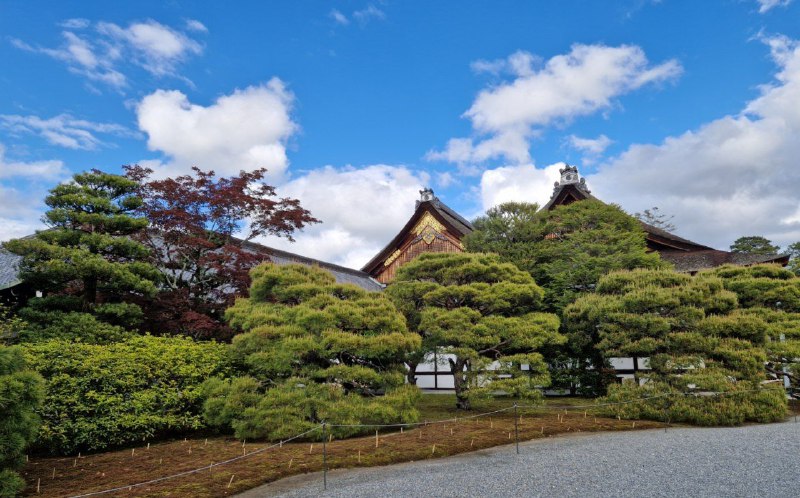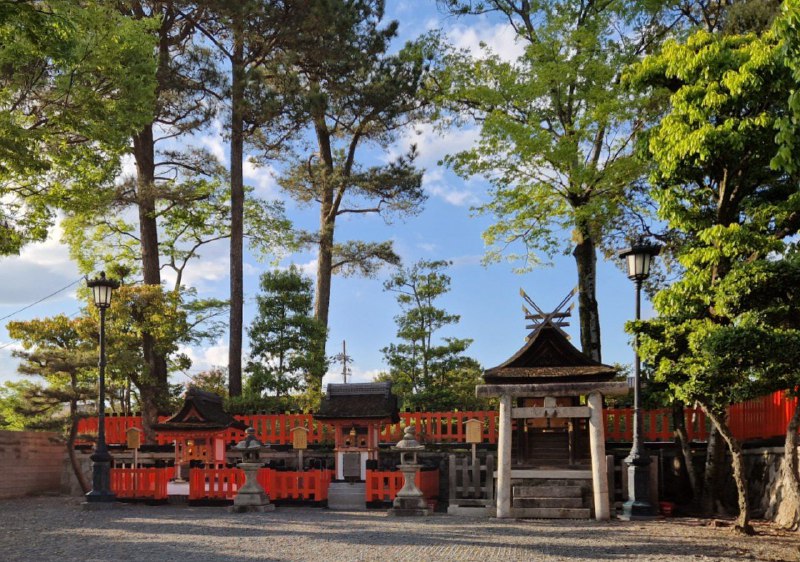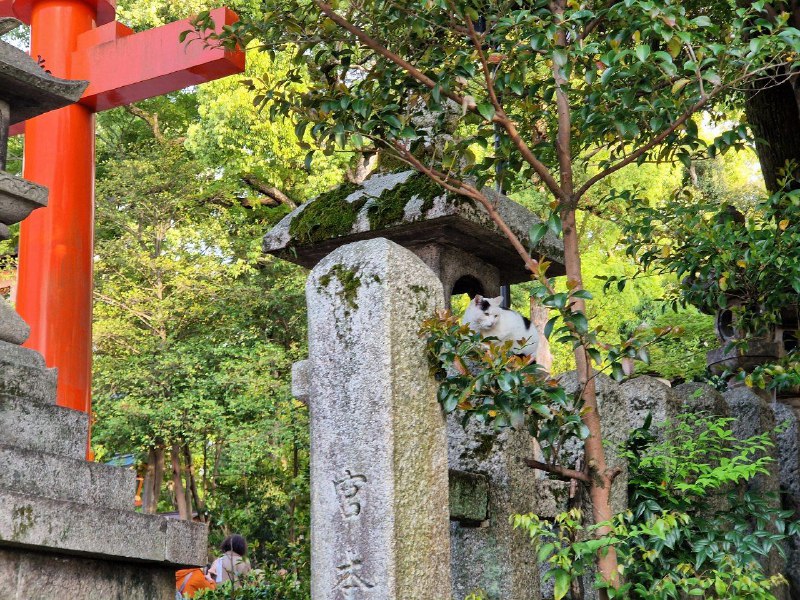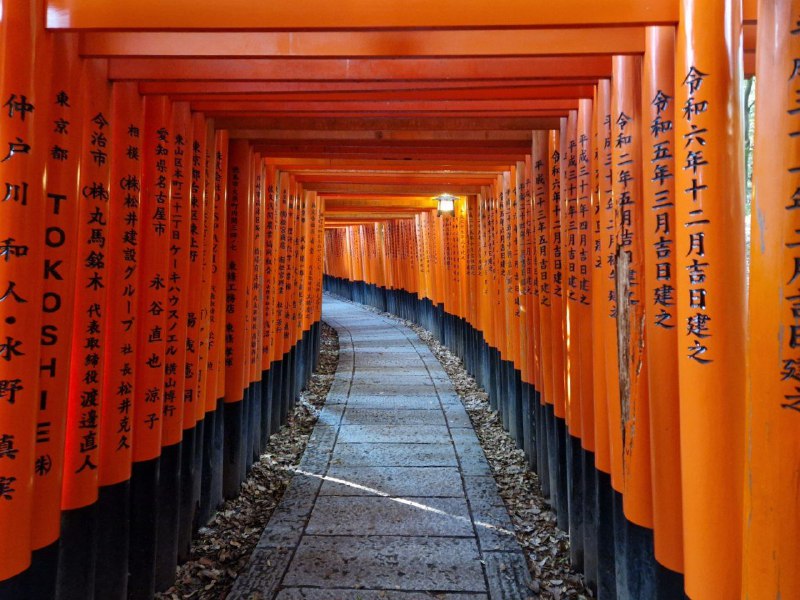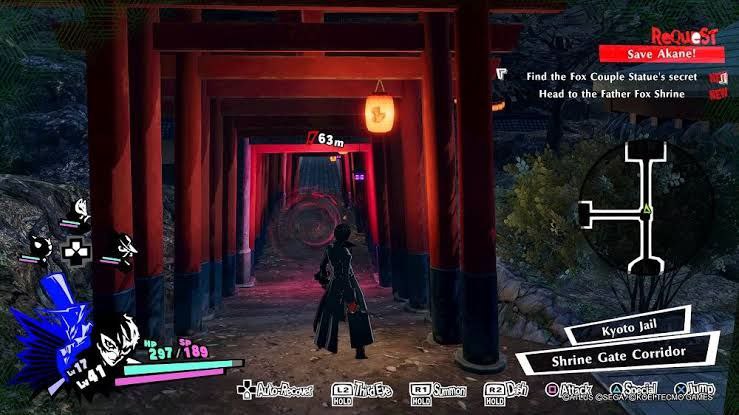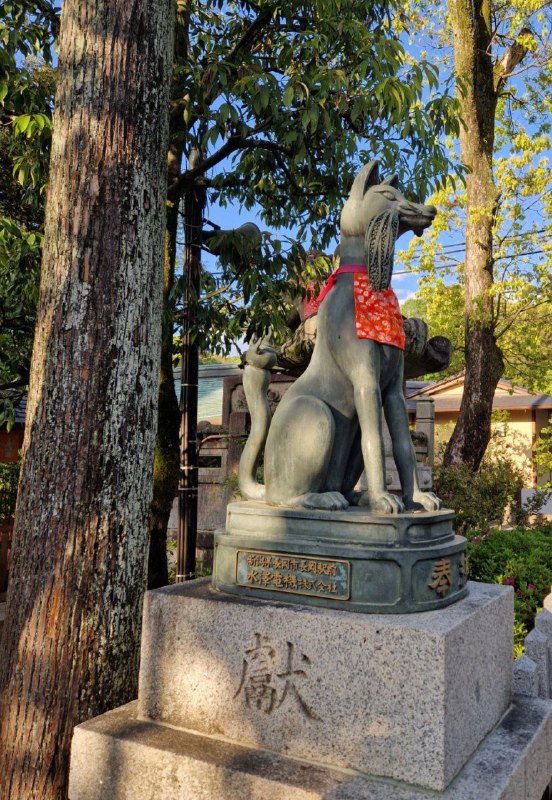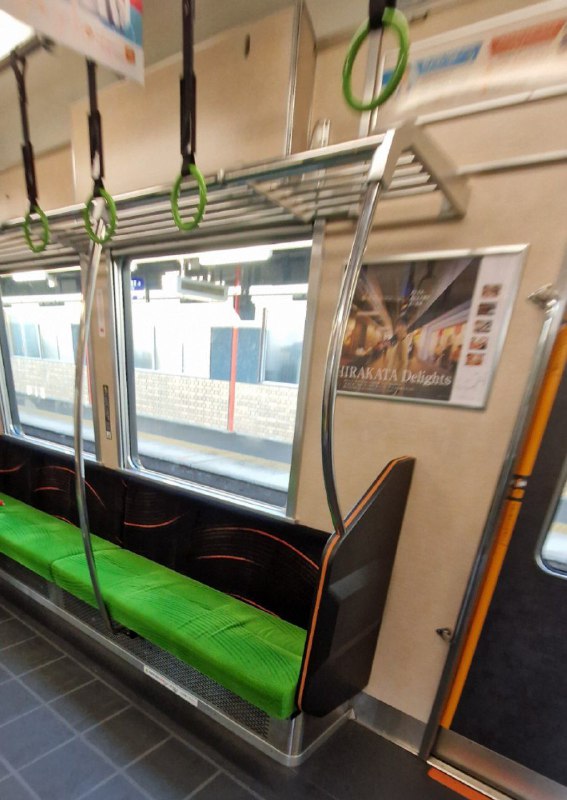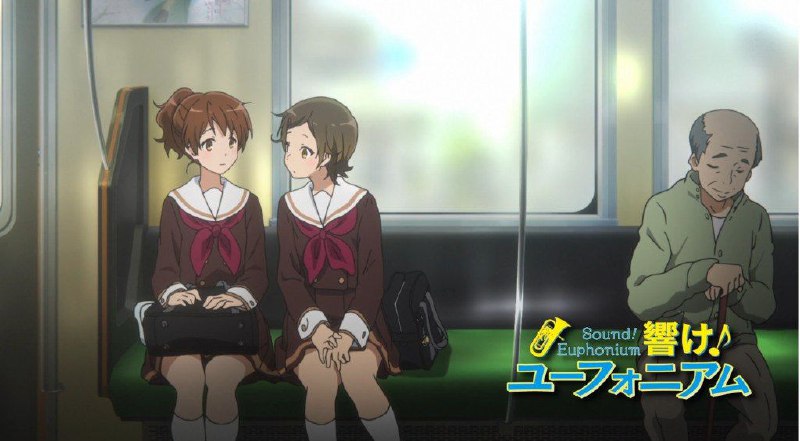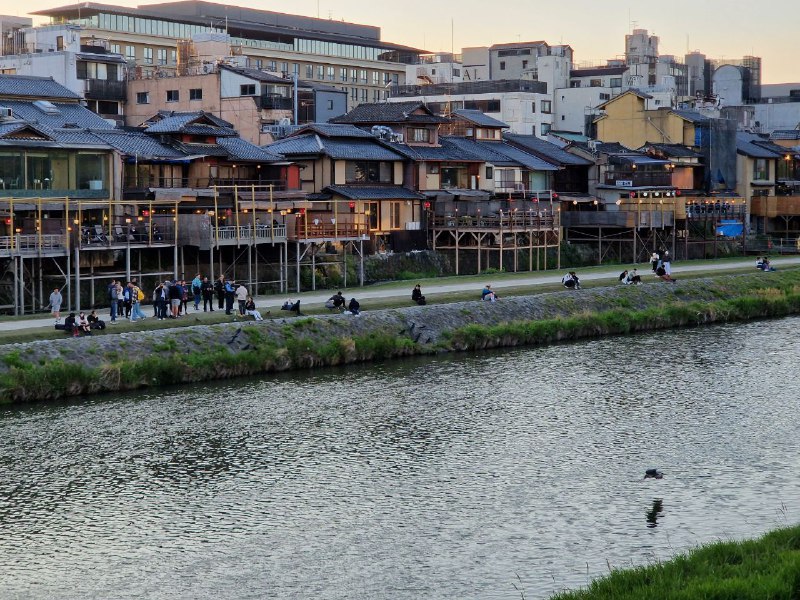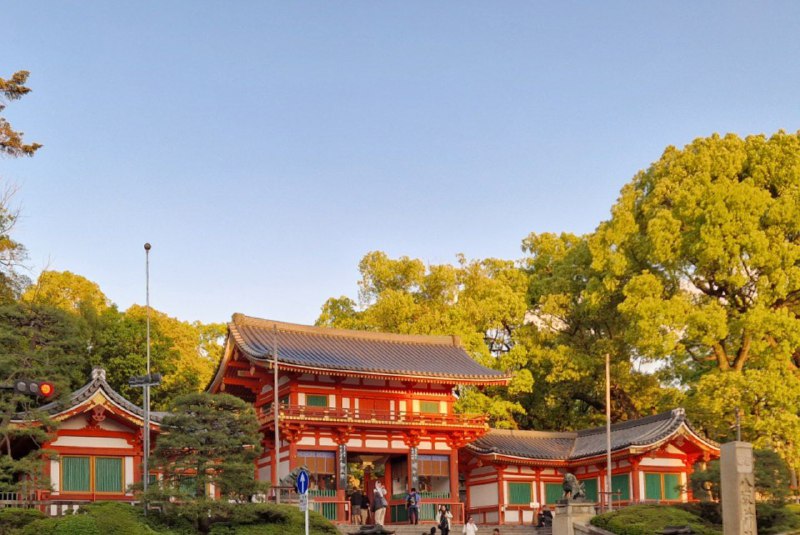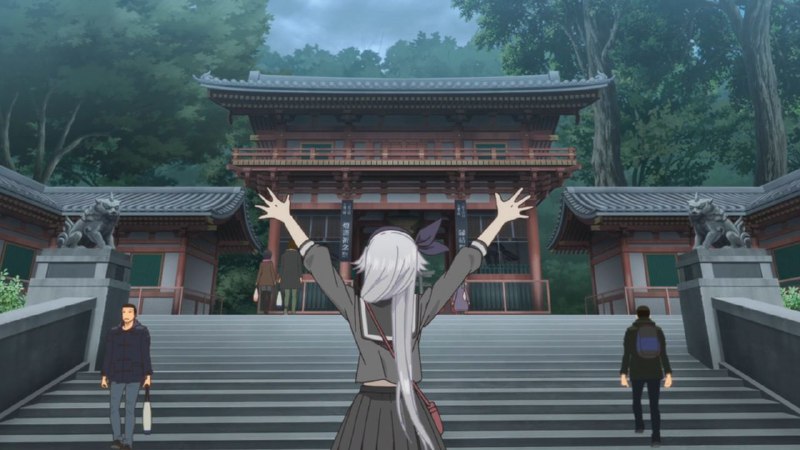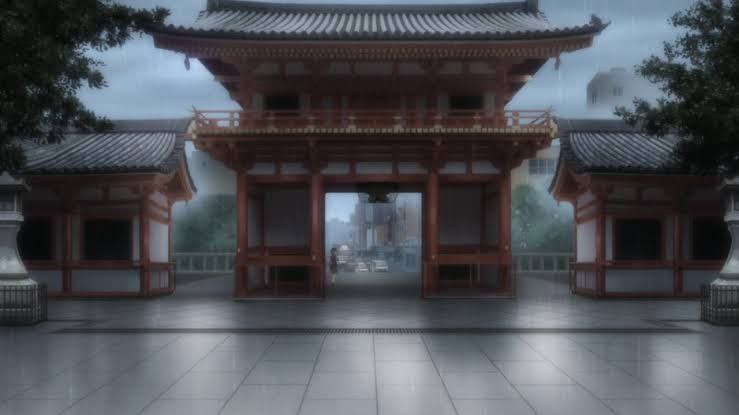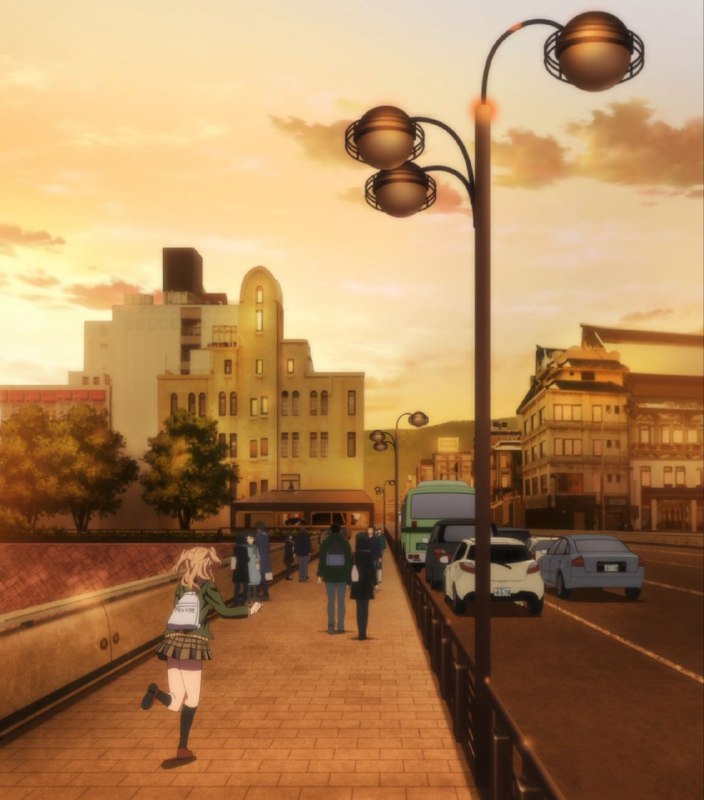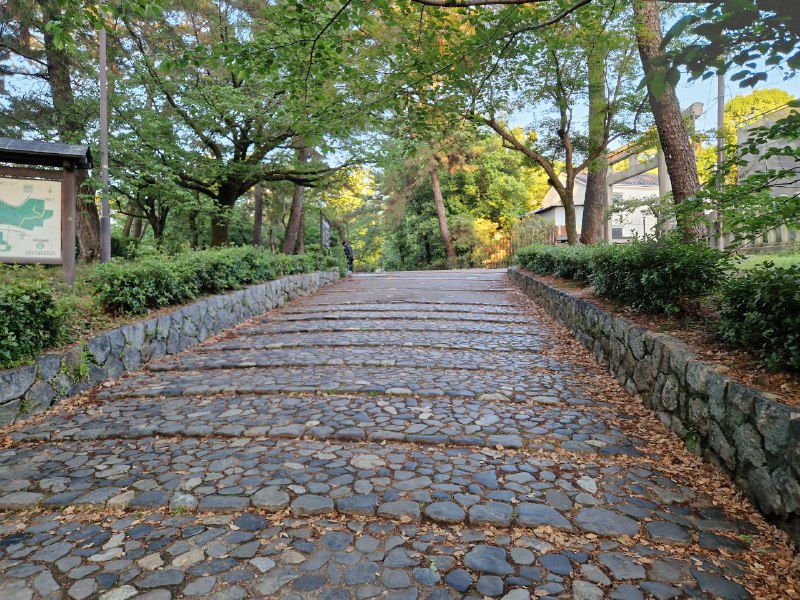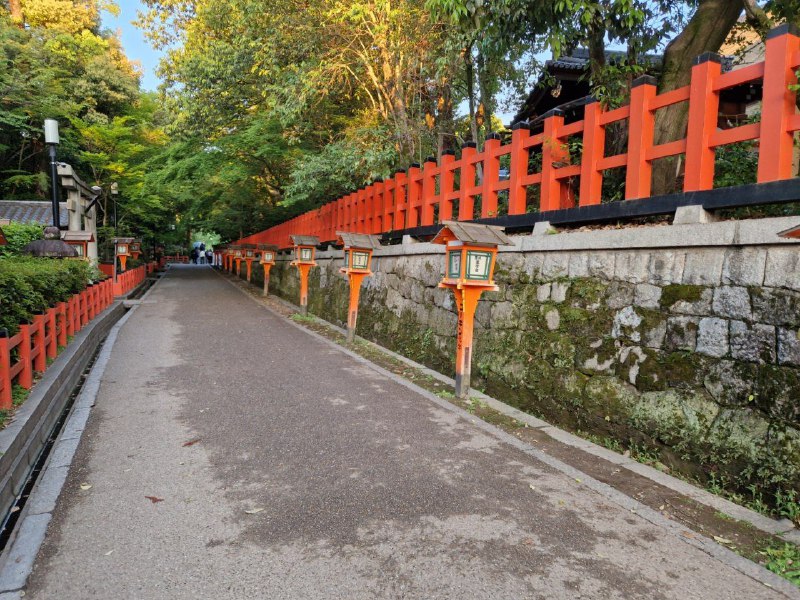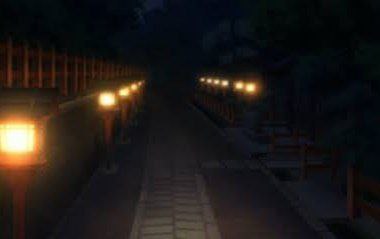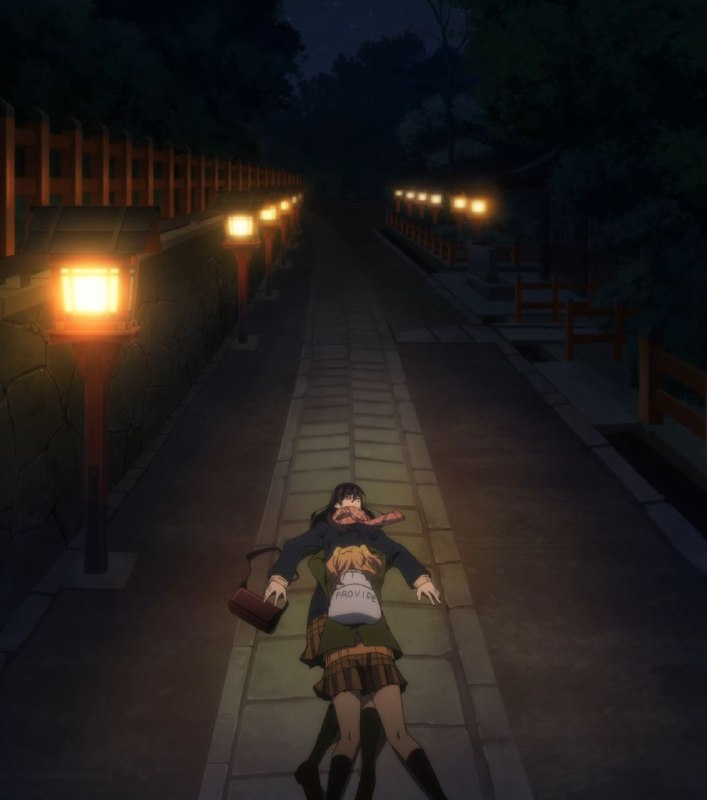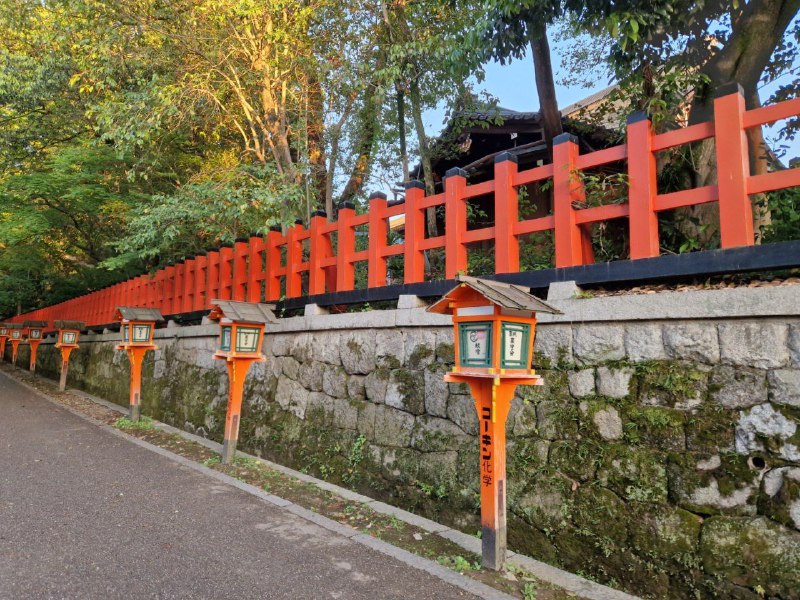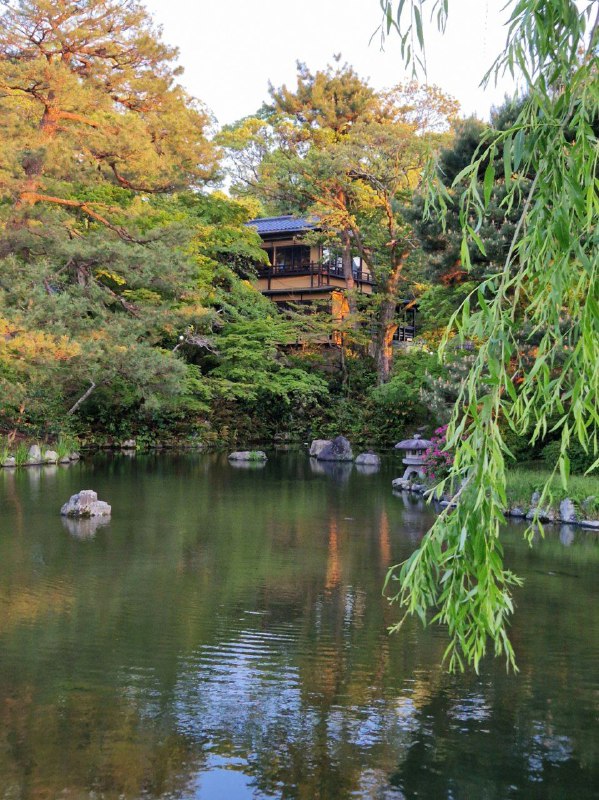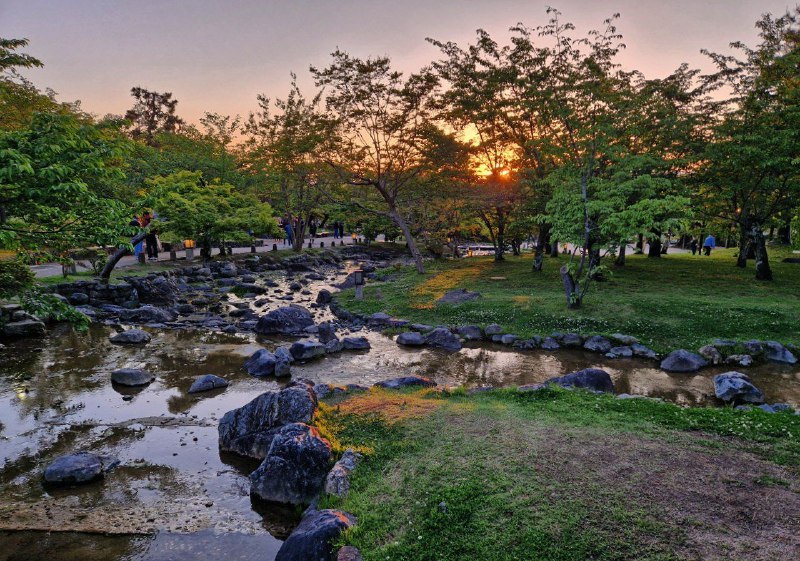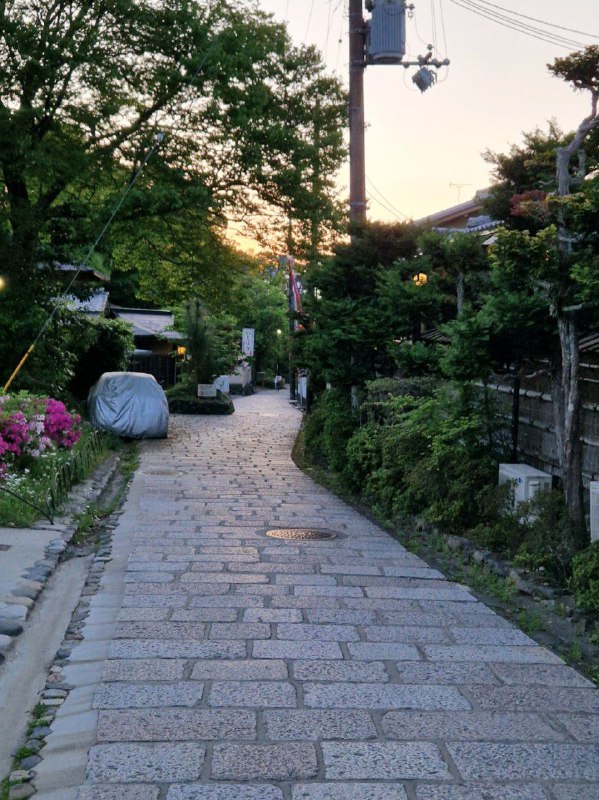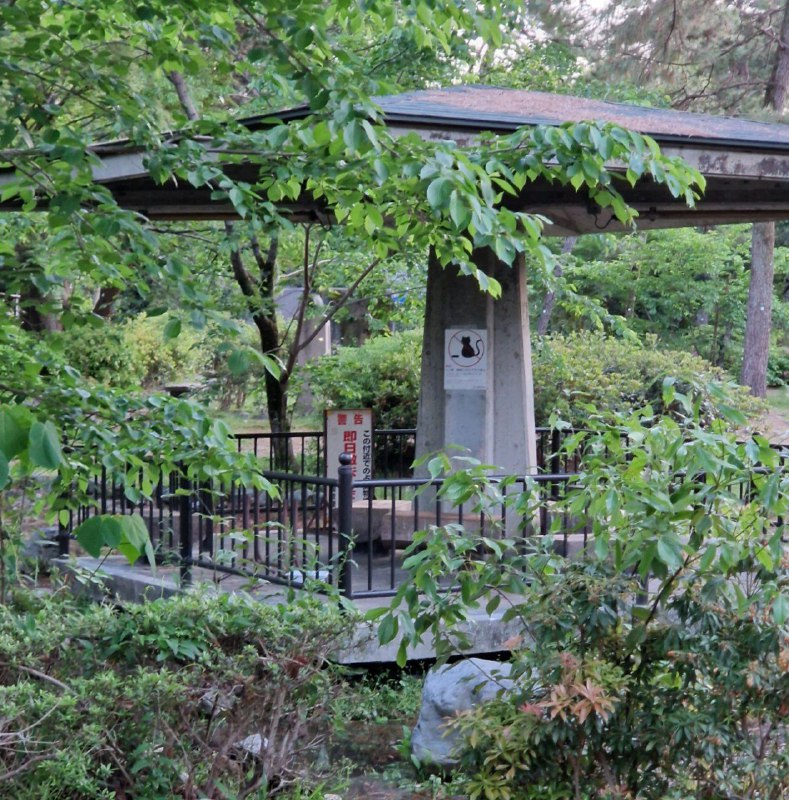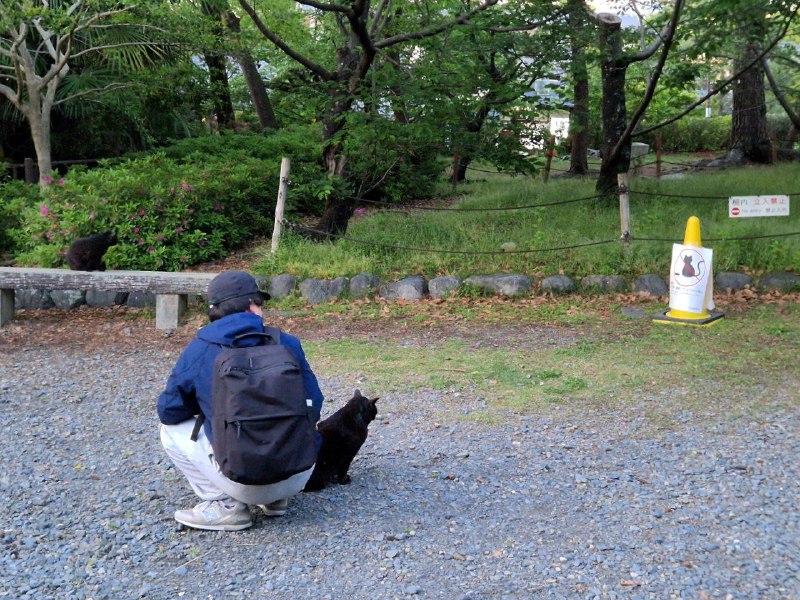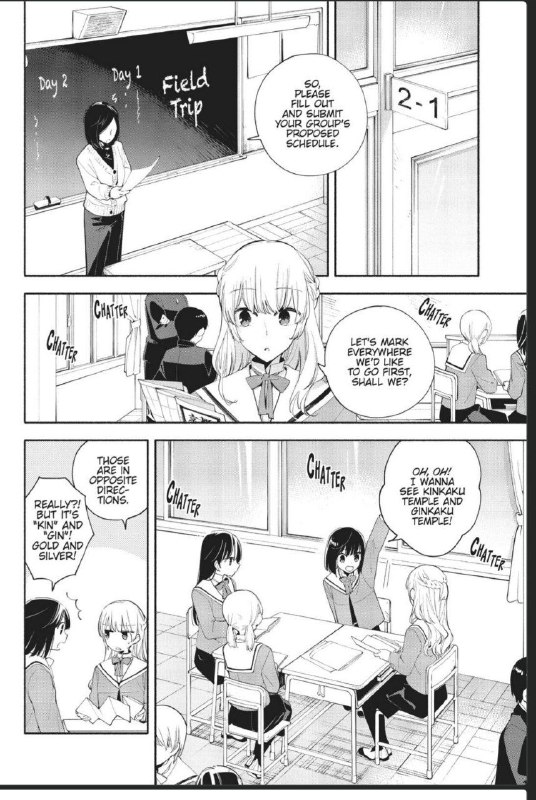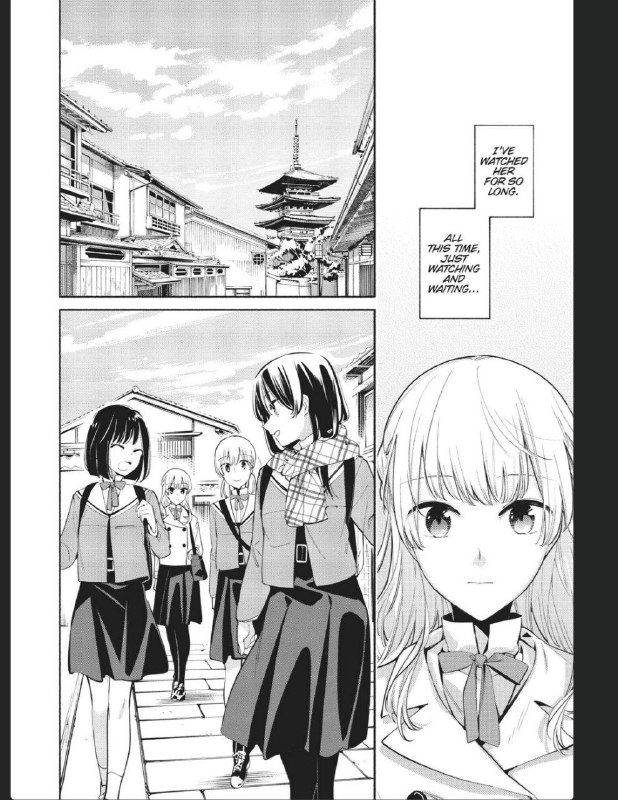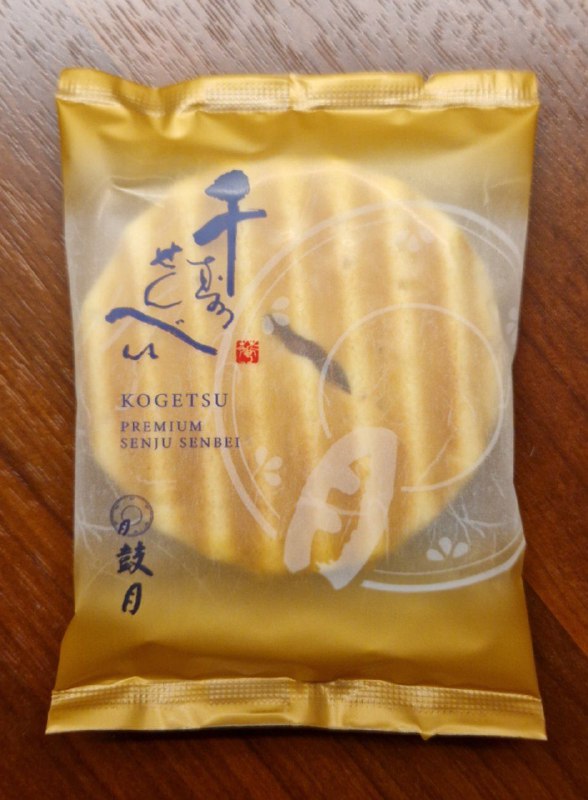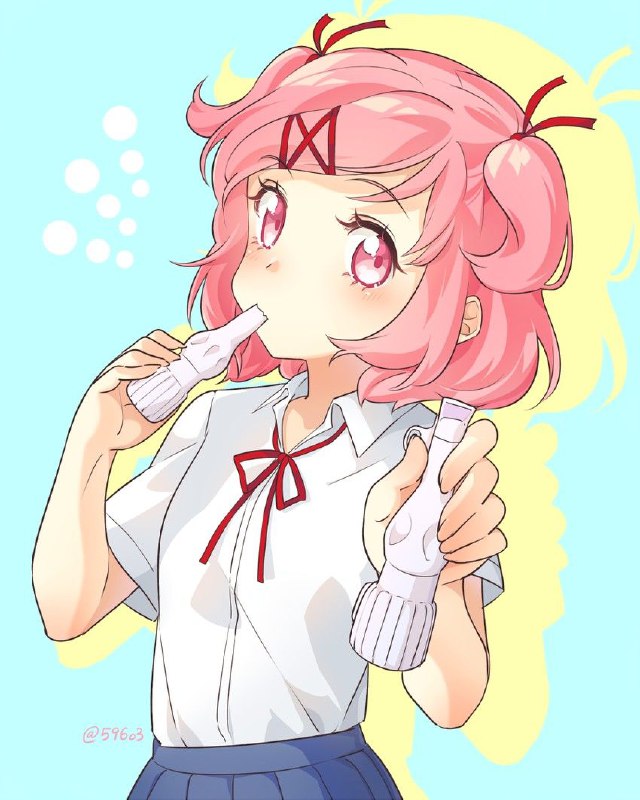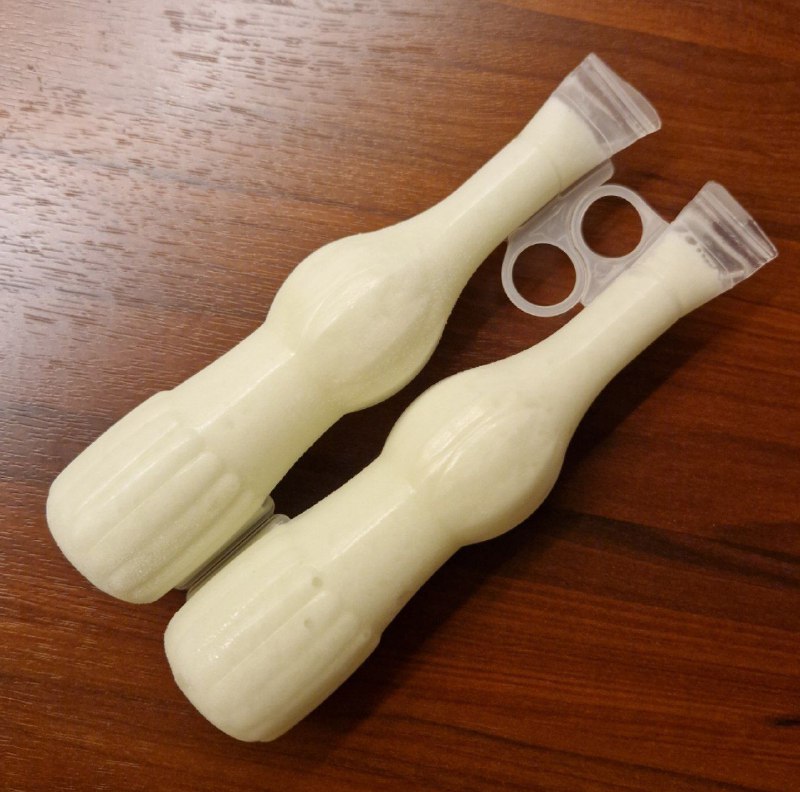All
and all, it feels like we should try visit some more of Kyoto... But
we're here only for 3 more days, and all of them are the part of the
Golden Week, the biggest holiday season in Japan. Let's see...
Guess who decided, after all, to go to Kyoto for one more day just to finish up the "school trip" itinerary? 😏 It is so "school trip" that even adult Japanese tourists around us kept mentioning that it feels like one.
Today is going to be full of history and Yuzu Citrus.
Most schools in Japan arrange annual school trips for their students, and the standard destination for schools outside of Kansai region is Kyoto. It's fun, it's pretty, and you learn a lot of history even if you don't try. It's very cheap for schools, too - a hotel package could cost under $20 per night per student.
Kyoto school trip is such a standard life event for an average Japanese student, it is depicted in many, many animes about high school. You could pick any anime and follow the itinerary from it; we chose the show called Citrus*
* It's called Citrus because the protagonist's name is Yuzu, a Japanese citrus. Yuzu is something between the orange and the lemon; very popular in refreshing drinks, like this one - Yuzu Citrus And Tea
Most schools in Japan arrange annual school trips for their students, and the standard destination for schools outside of Kansai region is Kyoto. It's fun, it's pretty, and you learn a lot of history even if you don't try. It's very cheap for schools, too - a hotel package could cost under $20 per night per student.
Kyoto school trip is such a standard life event for an average Japanese student, it is depicted in many, many animes about high school. You could pick any anime and follow the itinerary from it; we chose the show called Citrus*
* It's called Citrus because the protagonist's name is Yuzu, a Japanese citrus. Yuzu is something between the orange and the lemon; very popular in refreshing drinks, like this one - Yuzu Citrus And Tea
Welcome to To-ji temple, full name "The Temple
for the Defense of the Nation by Means of the King of Doctrines". The
temple was founded in 796, as one of the three Buddhist temples allowed
in Kyoto The Capital (the emperor was worried Buddhist influence was
spreading too wide). It got its current shape around the 9th century.
The pagoda you can see was destroyed by fire four times (lightning is
dangerous!), but it was always rebuilt the same way as the original (at
least that's what the leaflet says). The current pagoda was constructed
in 1643. It is designed to be earthquake-resilient; each floor is not
attached to other floors, so the building "dances" when there is an
earthquake.
The temple halls are in use, there are ancient
Buddha statues inside. This temple is the most important temple and a
founding ground for Esoteric Buddhism, an important branch of Japanese
Buddhism.
The temple's garden is so picturesque it's hard
to believe the grass and the heron aren't plastic. But no, they are
very, very real.
To our next destination! This is a must-see for
any Kyoto trip, allegedly. Toji temple didn't have many tourists, but
this place always has tourists, be it raining or snowing.
If there was an award for the most extravagant Japanese entrance ticket, this place would've won, I think (that's the ticket on the photo).
If there was an award for the most extravagant Japanese entrance ticket, this place would've won, I think (that's the ticket on the photo).
This is not just a ticket, it's also an ofuda - a paper talisman to seal evil and invite the good luck.
There are all sorts of designs for ofudas, you might have seen them in occult anime, like Bakemonogatari or DAN DA DAN.
Would you look at that. Kinkakuji, "The temple
of the Golden Pavilion". It used to be the palace of a shogun, built in
1399, but the will of the shogun was to convert the palace into a
temple, and that was done after his death. It is very showy, because in
Muromachi period it was important to show off your wealth.
The second and the third stories of the temple
aren't just yellow. They are pure gold leaf. The shogun who built it was
the real deal!!!
At this point, it is important to explain who Shogun were, and how they were related to the Emperor of Japan.
According to the official information, the first Japanese emperor lived around the 7th century BC, and was a demi-god. According to historians, it is possible to confirm the historical identities of Japanese emperors at least since the 5th century AD. The dynasty of the Japanese imperial family runs from those ancient times, a descendant of Amaterasu and thus the head of Shinto religion. Divine rulers, or something.
However, it was not uncommon for different people to usurp the power. In Heian period that was usually achieved through appointing a regent. The emperors themselves sometimes would even retire to a monastery as monks!
Everything has changed in 1185. A top ranked general, Shogun, was appointed a regent, and since then Japan had been a Shogunate.
At this point, it is important to explain who Shogun were, and how they were related to the Emperor of Japan.
According to the official information, the first Japanese emperor lived around the 7th century BC, and was a demi-god. According to historians, it is possible to confirm the historical identities of Japanese emperors at least since the 5th century AD. The dynasty of the Japanese imperial family runs from those ancient times, a descendant of Amaterasu and thus the head of Shinto religion. Divine rulers, or something.
However, it was not uncommon for different people to usurp the power. In Heian period that was usually achieved through appointing a regent. The emperors themselves sometimes would even retire to a monastery as monks!
Everything has changed in 1185. A top ranked general, Shogun, was appointed a regent, and since then Japan had been a Shogunate.
Since then and until the Meiji Restoration, the
commanding general of army, Shogun, had been the ruler of all Japan.
Thus, this used to be the palace of the guy who ruled Japan. Neat!
The design of the building is so iconic, many many many temples copied it, and then other temples and shrines copied the copies.
Why Shinto shrines would copy Buddhist temples? Well, it's complicated! Until the Meiji era, both religions were intertwined. It wasn't uncommon for Buddhist temples to have a side Shinto shrine with Kami, and Shinto shrines often had Buddhist temples on the side. It's been a bit over 150 years since the religions were forcibly separated (at least on the paper, in the legal sense).
The design of the building is so iconic, many many many temples copied it, and then other temples and shrines copied the copies.
Why Shinto shrines would copy Buddhist temples? Well, it's complicated! Until the Meiji era, both religions were intertwined. It wasn't uncommon for Buddhist temples to have a side Shinto shrine with Kami, and Shinto shrines often had Buddhist temples on the side. It's been a bit over 150 years since the religions were forcibly separated (at least on the paper, in the legal sense).
Kinkakuji temple complex looks serene, but
that's because all the pretty buildings are separated from the tourists
by the "DO NOT CROSS" lines. There are SO MANY tourists it might be
difficult to just take a photo of the building. Unfortunate.
As a working temple, it offers a vending machine with fortunes, and sells amulets and ofudas. Let's try our fortune...
"future blessing" aka "slightly better than
misfortune". It's best to leave the omikuji tied to the wall of the
temple so all the evils would avoid us!
Leaving the crowds of tourists behind, we take
the city bus to the Imperial Garden. It looks like it might rain, and it
seems the tourists are avoiding the Imperial Palace because of it!
The Kyoto Imperial Palace was built in 794 AD,
after the capital had moved to Kyoto from Nara. It had been rebuilt many
times since, the latest iteration was in 1788. Curiously enough, the
1788 rebuilt used the original Heian designs from the 8th century for
all the important buildings in the palace.
The palace has many layers of walls and many
gates. Inside the gate for visitors there was another gate for visitors
(this one), as well as waiting rooms.
The waiting rooms were decorated with luxurious
paintings. There were three waiting rooms, dividing the visitors by
their social stranding.
One more gate, I promise, bro, one more gate and you can see the emperor!!!
The emperor himself had a separate gate he used, bypassing three other gates that visitors had to go through.
Do you see the tourists? I don't! Lucky~
Do you see the tourists? I don't! Lucky~
It would be a mistake to think that the emperor
had to go only through one gate. There are at least two more gates
leading to the inner palace.
The imperial palace used to have even more layers outside, but even now it's a labyrinth.
Finally, a proper glance at the exterior of the inner palace! You can imagine it used to be an area bustling with the courtiers.
A model of the roof. Turns out, the roof isn't grass, it's made of thin layers of cypress
Pretty, isn't it?
The palace has a very special temple. It was
used to store the mirror Yata no Kagami until it was moved to its
current location in The Shrine.
What's up with the mirror Yata no Kagami? And what are the jewel Yasakani no Magatama and sword Kusanagi no Tsurugi? Well...
What's up with the mirror Yata no Kagami? And what are the jewel Yasakani no Magatama and sword Kusanagi no Tsurugi? Well...
It is said that the first emperor of Japan has
received those three powerful magical artifacts from his
grand-grandfather. His grand-grandfather is actually a grand child of
Amaterasu herself, the goddess of Sun in Shinto and the head of the
Japanese pantheon.
The magatama is said to be a jewel that Amaterasu used to create gods. Amaterasu also created agriculture and weaving, according to the legends.
Amaterasu wasn't the first goddess (she's a daughter of Izanagi and his sister-wife Izanami), and she had a younger siblingTsukuyomi (The Moon) and a yonger brother Susano (The Storm).
Susano was kind of a jerk; he won a fight against Amaterasu, and to rub it into her face, he defecated on her throne. Amaterasu almost forgave him, but then he threw a freaking horse through a roof of the palace, killing one of Amateurs maidens. Heartbroken, Amaterasu hid herself in The Heavenly Rock Cave.
Do you see a problem?
Reminder: Amaterasu is THE Sun.
The magatama is said to be a jewel that Amaterasu used to create gods. Amaterasu also created agriculture and weaving, according to the legends.
Amaterasu wasn't the first goddess (she's a daughter of Izanagi and his sister-wife Izanami), and she had a younger siblingTsukuyomi (The Moon) and a yonger brother Susano (The Storm).
Susano was kind of a jerk; he won a fight against Amaterasu, and to rub it into her face, he defecated on her throne. Amaterasu almost forgave him, but then he threw a freaking horse through a roof of the palace, killing one of Amateurs maidens. Heartbroken, Amaterasu hid herself in The Heavenly Rock Cave.
Do you see a problem?
Reminder: Amaterasu is THE Sun.
The cave exists in Iwato, and is so secluded
the visitors of any kind are not allowed. Anyhow, the Earth without sun
sucks, so the lesser gods started to think of a plan on luring Amaterasu
out of the cave.
The plan was conceived by the god of Wisdom, Omoikane, and executed by the goddess of arts and dawn Ame-no-Uzume. Ame-no-Uzume put the magatama on the tree next to the cave (to increase the magical power) and started to dance and laugh. Amaterasu asked Ame-no-Uzume what was happening, and Ame-no-Uzume lied that a new, even greater, goddess was born. Amaterasu, curious, peeked out of the cave - and this is where Ame-no-Uzume used the Yata no Kagami mirror to show Amaterasu her own reflection.
The plan was conceived by the god of Wisdom, Omoikane, and executed by the goddess of arts and dawn Ame-no-Uzume. Ame-no-Uzume put the magatama on the tree next to the cave (to increase the magical power) and started to dance and laugh. Amaterasu asked Ame-no-Uzume what was happening, and Ame-no-Uzume lied that a new, even greater, goddess was born. Amaterasu, curious, peeked out of the cave - and this is where Ame-no-Uzume used the Yata no Kagami mirror to show Amaterasu her own reflection.
Amaterasu got out of the cave. Susano was sent
to the hell for his behaviour, where he had to kill a legendary eight
headed snake Yamato no Orochi. The tail of the snake had a sword, which
Susano offered to Amaterasu as a sign of reconciliation. The sword is,
of course, Kusanagi no Tsurugi.
The sword, the mirror and the magatama jewel
are thus the Imperial Regalia, owned by the emperor. They are stored in
the highest security temples in the country (four rows of walls!). The
public had never seen them, but they are brought to the sunlight (in
protective packages) during the each emperor's ascension.
Maybe the only magic they have is being some 2000 years old, but even so, it's pretty impressive.
Maybe the only magic they have is being some 2000 years old, but even so, it's pretty impressive.
The access to the interior of the palaces is
forbidden. The palace is actually still used by the emperor every few
years or decades.
Well, it IS a pretty palace. It is a miracle plebs like me can see it!
The royal garden is also closed for visitors.
This is "The Room Where It Happens": a part of
the inner palace where it was decided that the Meiji Restoration will
happen. After 7 centuries of the Shogun rule, Japan has faced
difficulties: famine led to economical difficulties; foreign influences
insisted Japan had to embrace the world trade; the merchants gained
influence and the samurai had lost it. The emperor Meiji declared that
he will get the power back, will open the country for foreigners, and
abolish the feudalism. It was met with a civil war, but the Shogunate
fell, and the modern Japan was born.
Yet another glimpse of the Inner Palace Garden.
Maybe Amaterasu will bless us and we'll see the
garden open to general visitors one day. Maybe not. Let's hope not.
This place needs less tourists, not more.
The rear side of the inner palace ends our little tour through the Kyoto Imperial Palace.
It was a miracle there weren't many tourists today. Usually (according to the Internet) it is very loud and overcrowded, worse than in its golden days.
It was a miracle there weren't many tourists today. Usually (according to the Internet) it is very loud and overcrowded, worse than in its golden days.
The next area of Kyoto has a train stop aptly
named Inari. This is where you can find The Fushimi Inari shrine, the
head/main shrine for the goddess circle Inari (mentioned a while ago).
It was founded in 711 AD, and is a huge tourist trap ever since.
There are as many tourists as in the Golden Pavilion. Despite the signs "This is a place of worship, be quiet, for Pete's sake", it is bustling with traders and full of loud tourists.
There are as many tourists as in the Golden Pavilion. Despite the signs "This is a place of worship, be quiet, for Pete's sake", it is bustling with traders and full of loud tourists.
Inari's messengers are foxes, the cats aren't welcomed. But the cats still go in.
Buddhists are generally accepting of cats in
temples, and say they're auspicious, but in Shinto the position of a cat
is far more perilous. Yes, Inari might take an appearance of a cat, if
they wish so, but far more often a cat is associated with being a
monster (yokai). Old cats, according to legends, turn into bakeneko (a
prankster cat), or, worse still, a malicious nekomata.
Some say that bakeneko, cats that walk on their back legs, speak Japanese and drink lamp oil, come from the fact that Japanese people used sardine oil as the lamp oil. The cats would have to reach for the lamps to drink it, standing on their back feet, and meowing happily, as if talking.
Some say that bakeneko, cats that walk on their back legs, speak Japanese and drink lamp oil, come from the fact that Japanese people used sardine oil as the lamp oil. The cats would have to reach for the lamps to drink it, standing on their back feet, and meowing happily, as if talking.
The Inari shrine is famous for its complicated
layout (4 kilometres of mountain trails) and its path of red torii gates
called Senbon Torii ("A thousand torii"). There are only some 800
toriis at the moment, but the number is increasing.
Rich people and organisations started to donate torii gates to shrines in the Edo period (17th century) either to have a wish come true, or in gratitude for a wish coming true. This tradition still continues.
The path would have been absolutely magical if it wasn't for an overwhelming amount of tourists. It took some ten minutes to take this photo, and the very next moment the tourists started flowing through the gates once again. I am aware that I am a part of the problem, thank you :)
Rich people and organisations started to donate torii gates to shrines in the Edo period (17th century) either to have a wish come true, or in gratitude for a wish coming true. This tradition still continues.
The path would have been absolutely magical if it wasn't for an overwhelming amount of tourists. It took some ten minutes to take this photo, and the very next moment the tourists started flowing through the gates once again. I am aware that I am a part of the problem, thank you :)
Fictional version of the Inari shrine is used as one of the locations in Persona 5 Strikers.
👋 fox guardians
The train to my next destination looks surprisingly familiar...
Oh, that's the train that was in Sound! Euphonium. It connects Uji, Osaka and the South-East of Kyoto.
Our next stop gives us a chance to see the path along the Kamo River. The path isn't as crowded as the touristy area around it.
The river is featured in many, many shows about Kyoto, including the cult classic Tatami Galaxy.
Yasaka shrine, also known as Gion Shrine. It is
a Shinto shrine founded in 656 AD to appease to the
Amaterasu's-throne-shitting dragon-killing god Susanoo. Originally it
was all based around a Buddhist deity Gozu Tennu, but the shrine had to
pivot to Susanoo when Meiji demanded to split Shinto and Buddhism.
Whenever there is an epidemics or a calamity, Shinto priests plead Susanoo to stop the vengeful spirits.
Whenever there is an epidemics or a calamity, Shinto priests plead Susanoo to stop the vengeful spirits.
The shrine as it seen in the anime Citrus
Bonus: hey, that's the bridge across the Kamo River, right next to the place the photo of which I've posted
The main entrance to the shrine is full of tourists. The side entrance is completely empty.
The side entrance leads to a street of small
shrines for smaller kami. The street is far prettier than on this photo,
but the signs ask the visitors to avoid taking photos where shrines
itself would be visible; perhaps, this is because in some Shinto
traditions the enshrined object can be visible from outside of the
shrine.
It probably looks really cool at night. The shrine is open 24/7. This is, of course, a shot from the Citrus
Don't run around the shrine grounds at night! It's not safe!
The lanterns seem to have company names on them. Perhaps, they were donated just like the torii?
There is a small park next to the shrine. It's
simple and is clearly underappreciated by everyone. I mean, it's not an
imperial garden, but it's still pretty neat.
It is right next to the hills on the Eastern part of Kyoto.
The streets next to the park are tranquil and feel really, really old
Shrine grounds ahead. Cats aren't allowed. Do not feed the cats. I repeat: cats are not allowed.
Allowed or not, cats are there. Right next to the signs. Cats do as they please.
Note: the photo was taken with a permission from the person in the photo. Please don't take photos of strangers without asking. I asked the cats for permission too, they said "nyan".
Note: the photo was taken with a permission from the person in the photo. Please don't take photos of strangers without asking. I asked the cats for permission too, they said "nyan".
Extra Notes:
Ginkaku temple is really famous, too. It was inspired by the Kinkaku, but as the comic says, it really is far away from it.
Ginkaku temple is really famous, too. It was inspired by the Kinkaku, but as the comic says, it really is far away from it.
Oh hey, it's a To-ji!
Note: there is a tradition in Japan to bring
souvenirs (called o-miyage) from trips. The most common souvenirs are
local foods; usually foods that can only be bought in the area you're
visiting. The classic Kyoto souvenir is a cinnamon cracker called
Yatsuhashi; however, it spoils very fast - in a week or so. Back up
options that last longer are senbei crackers and Uji tea 🤔
We tried an exquisite senju senbei from a famous local sweets maker; it is delicious. It will make a great souvenir!
Cultural note: a summer must-have in Japan (for
kids and young in spirit, anyways) is a funny drinkable ice cream
called Papico. It is sold in little squeezable bottles, and has a
texture of shaved ice (though it seems to be mostly a regular ice
cream). One pack has two bottles, so it's best to enjoy with a friend.
The bottles are fairly small. The ice cream inside is tasty.
This is yet another example of how much plastic there is in daily Japanese lives 🥹
This is yet another example of how much plastic there is in daily Japanese lives 🥹
